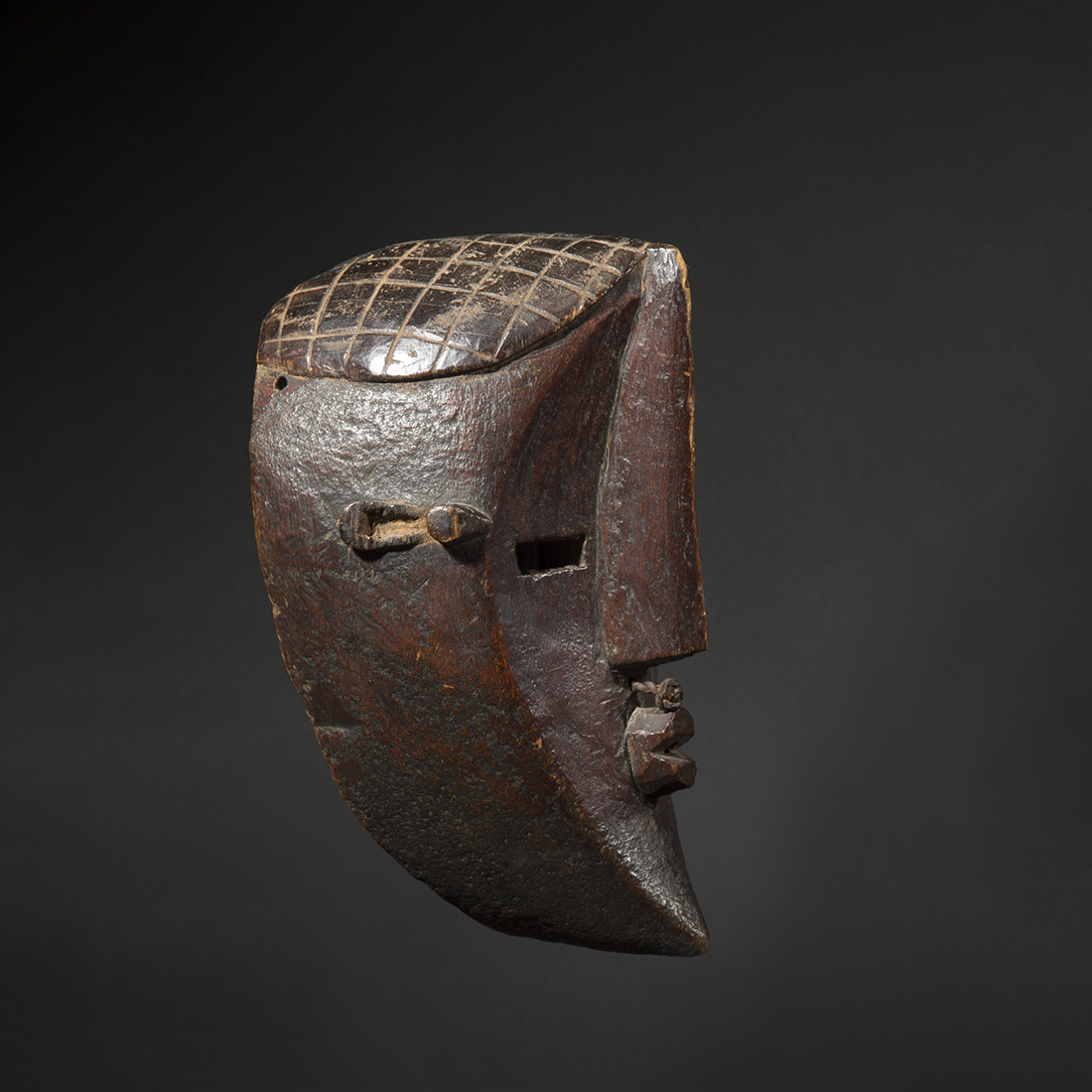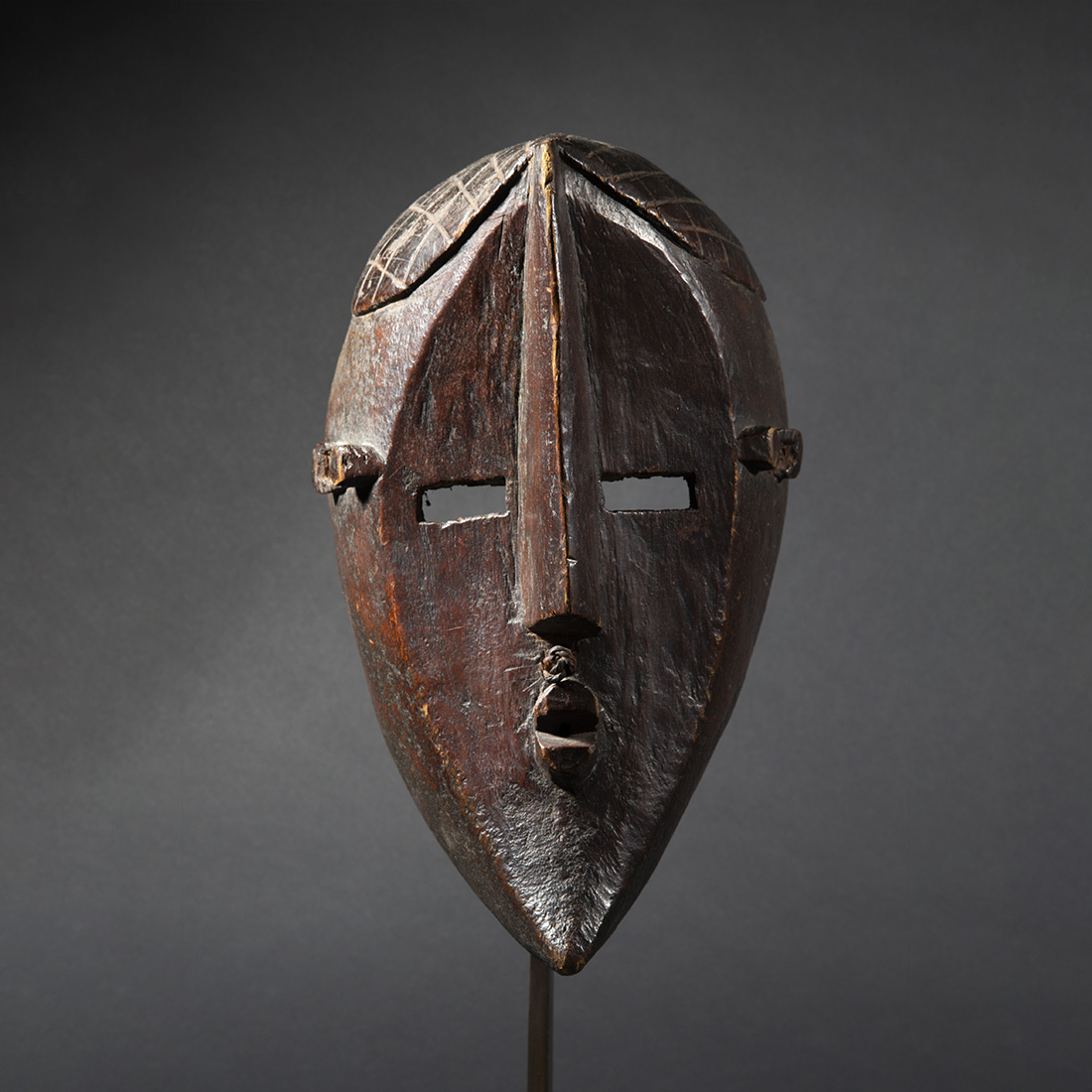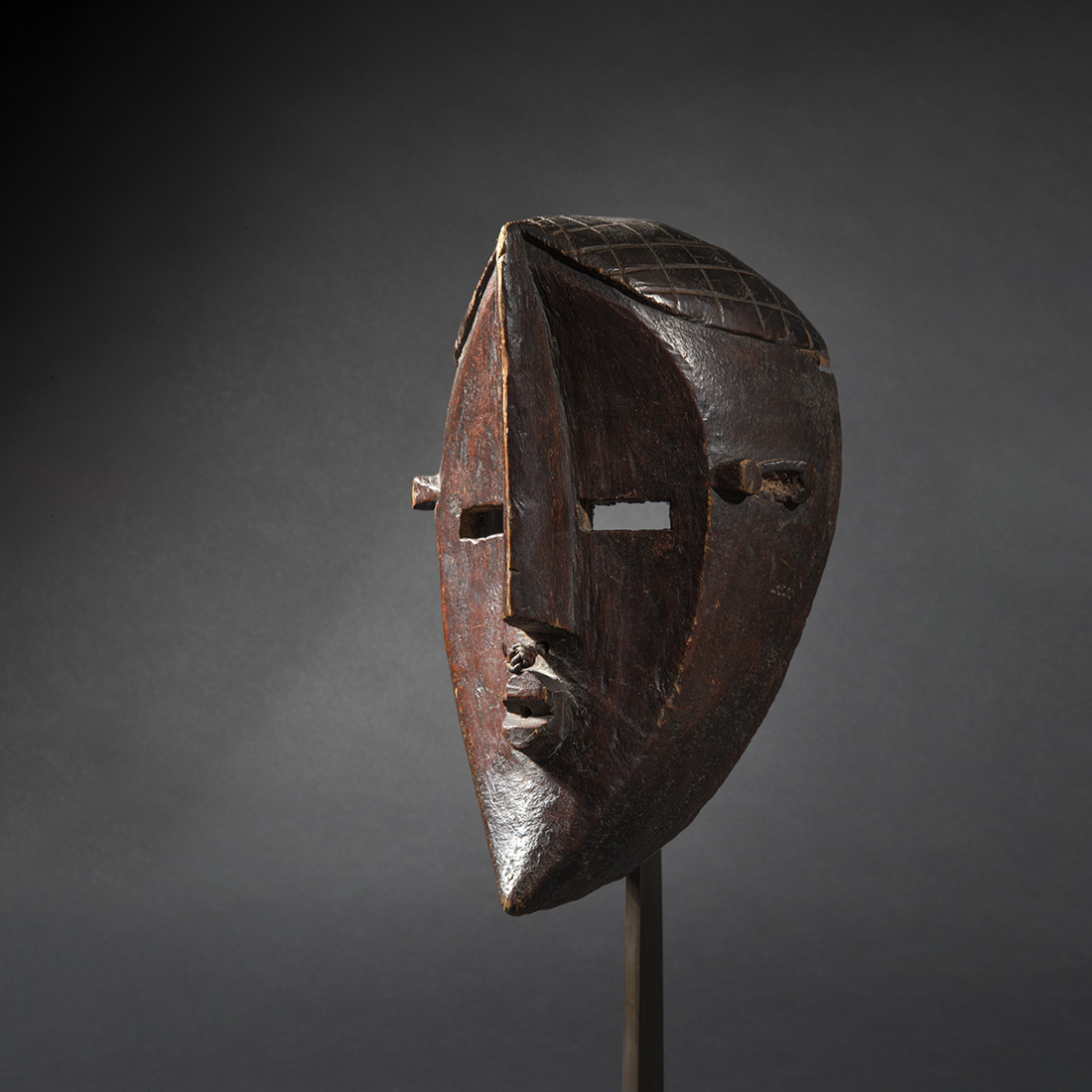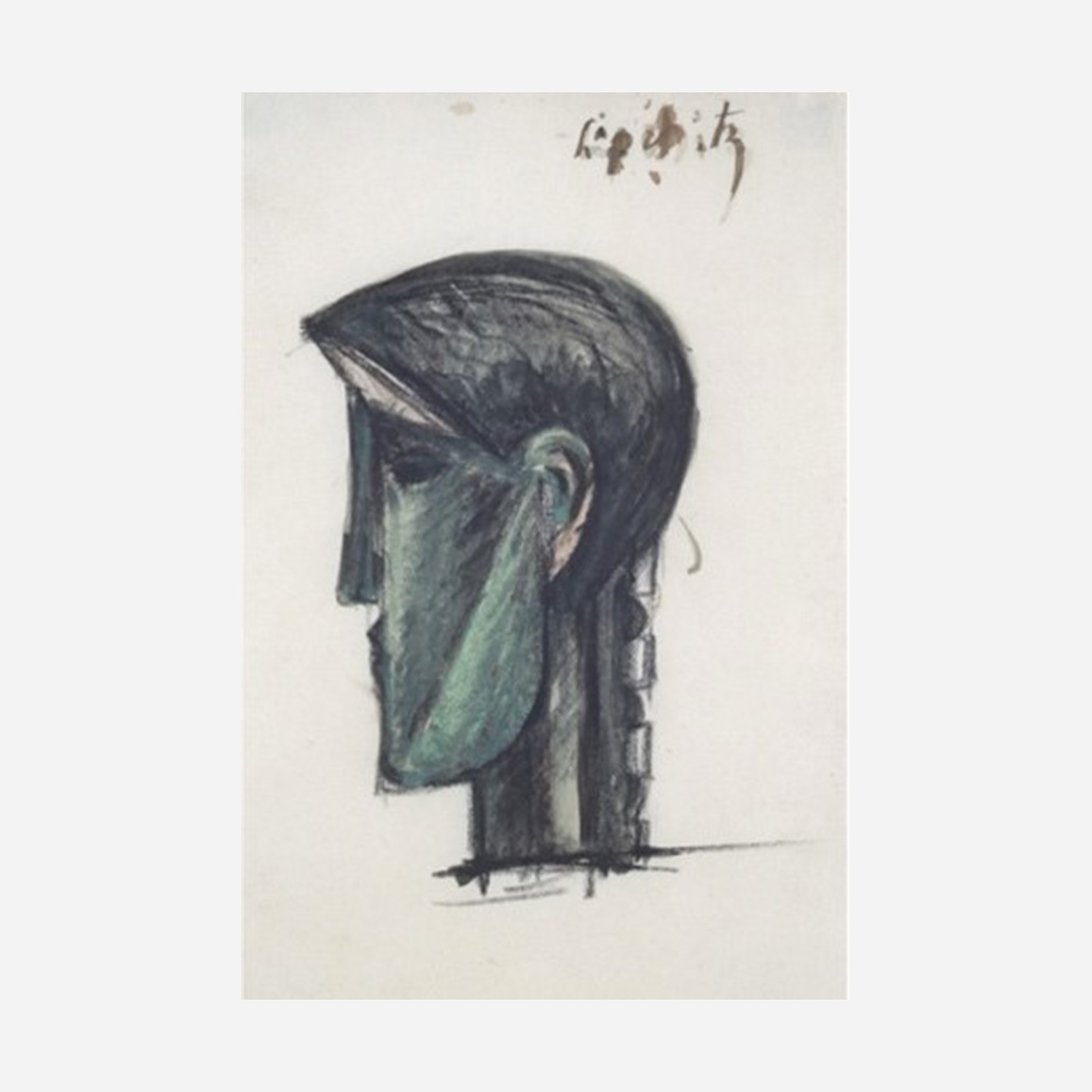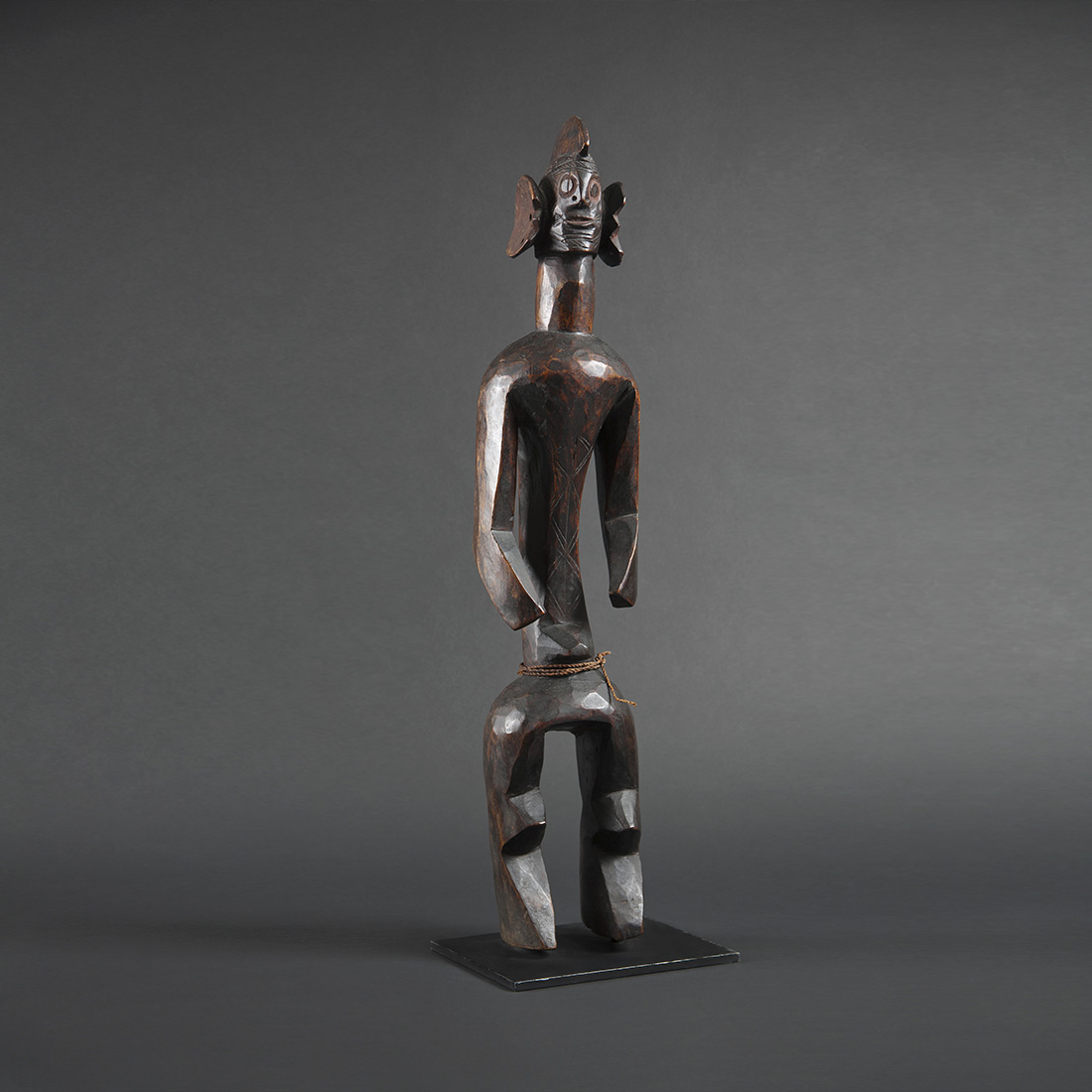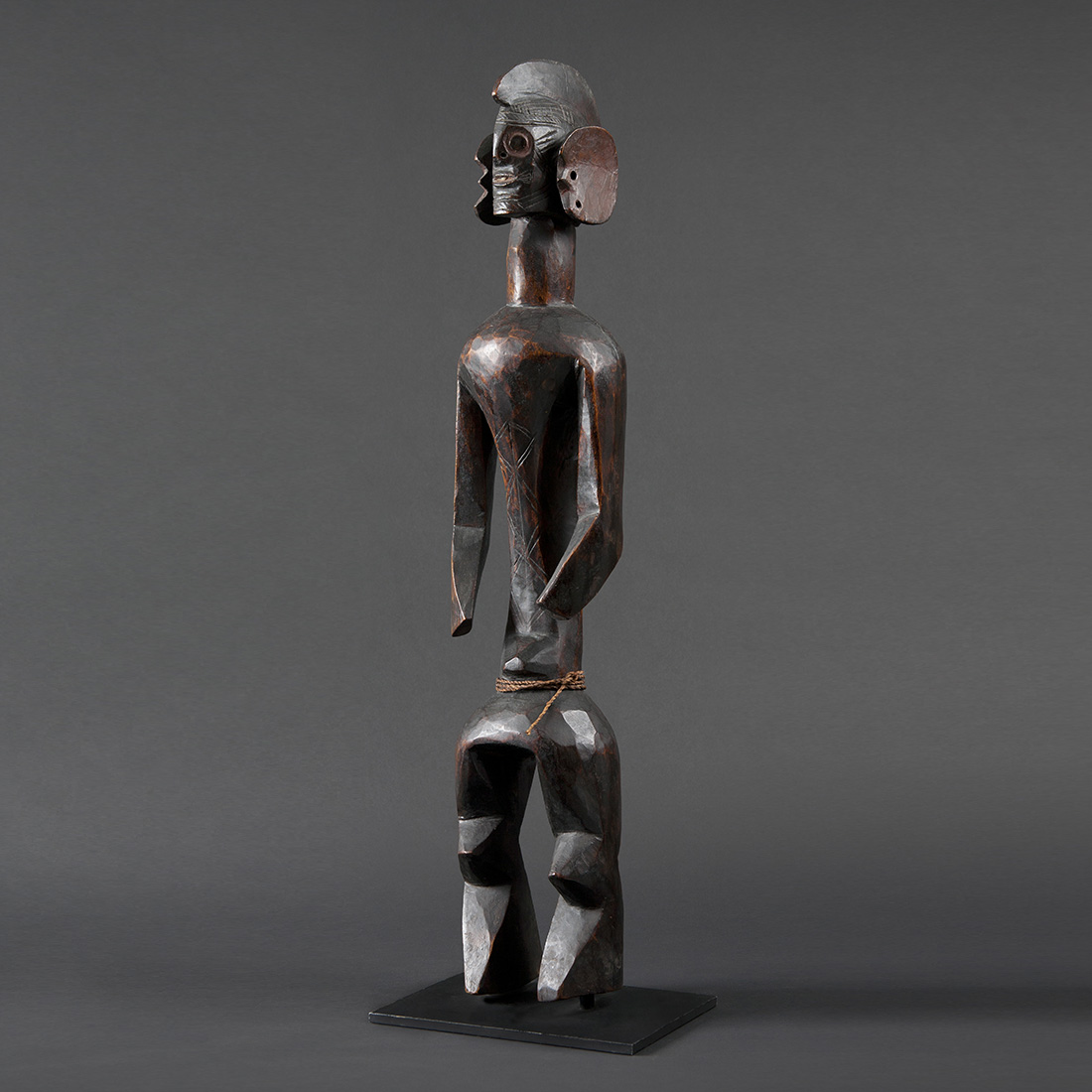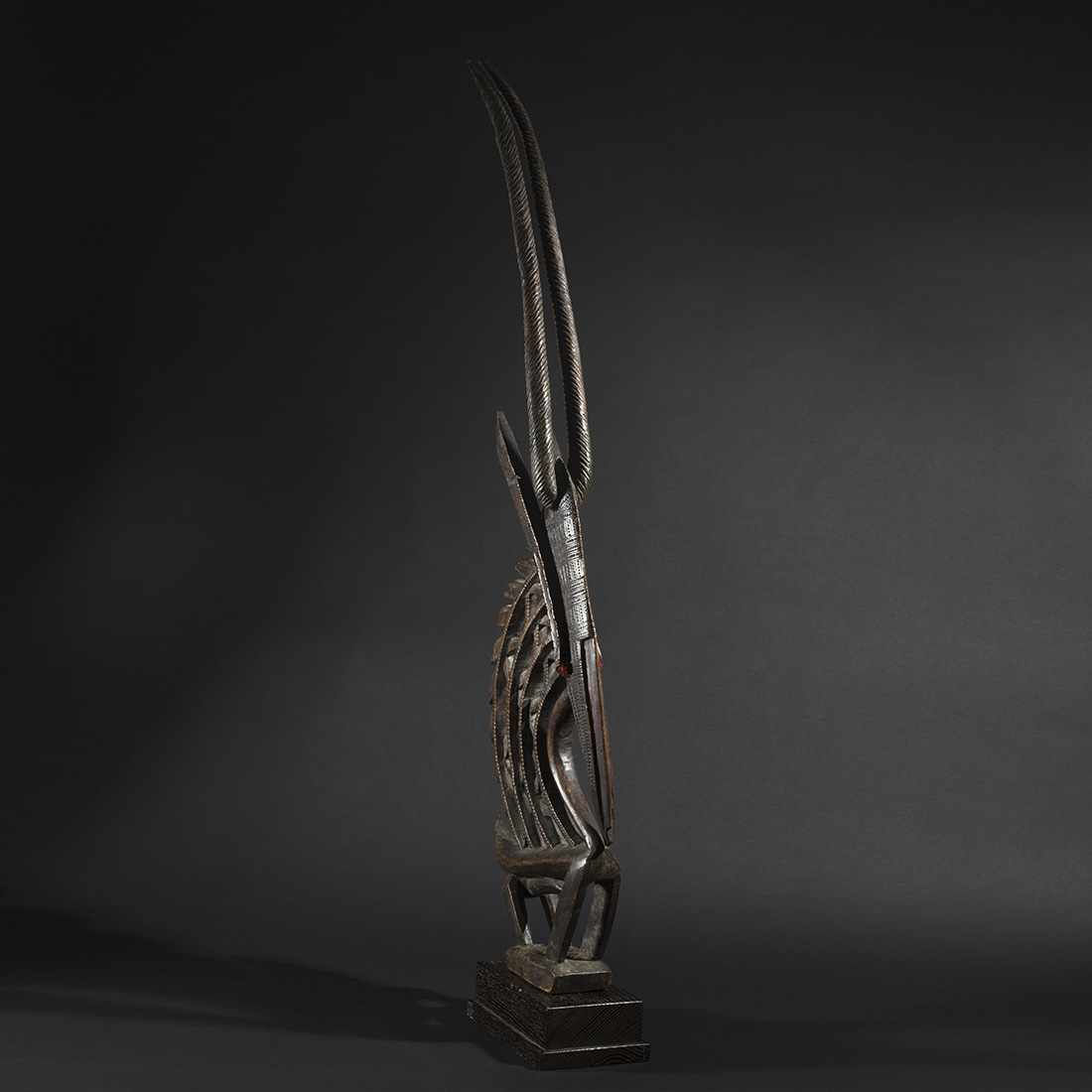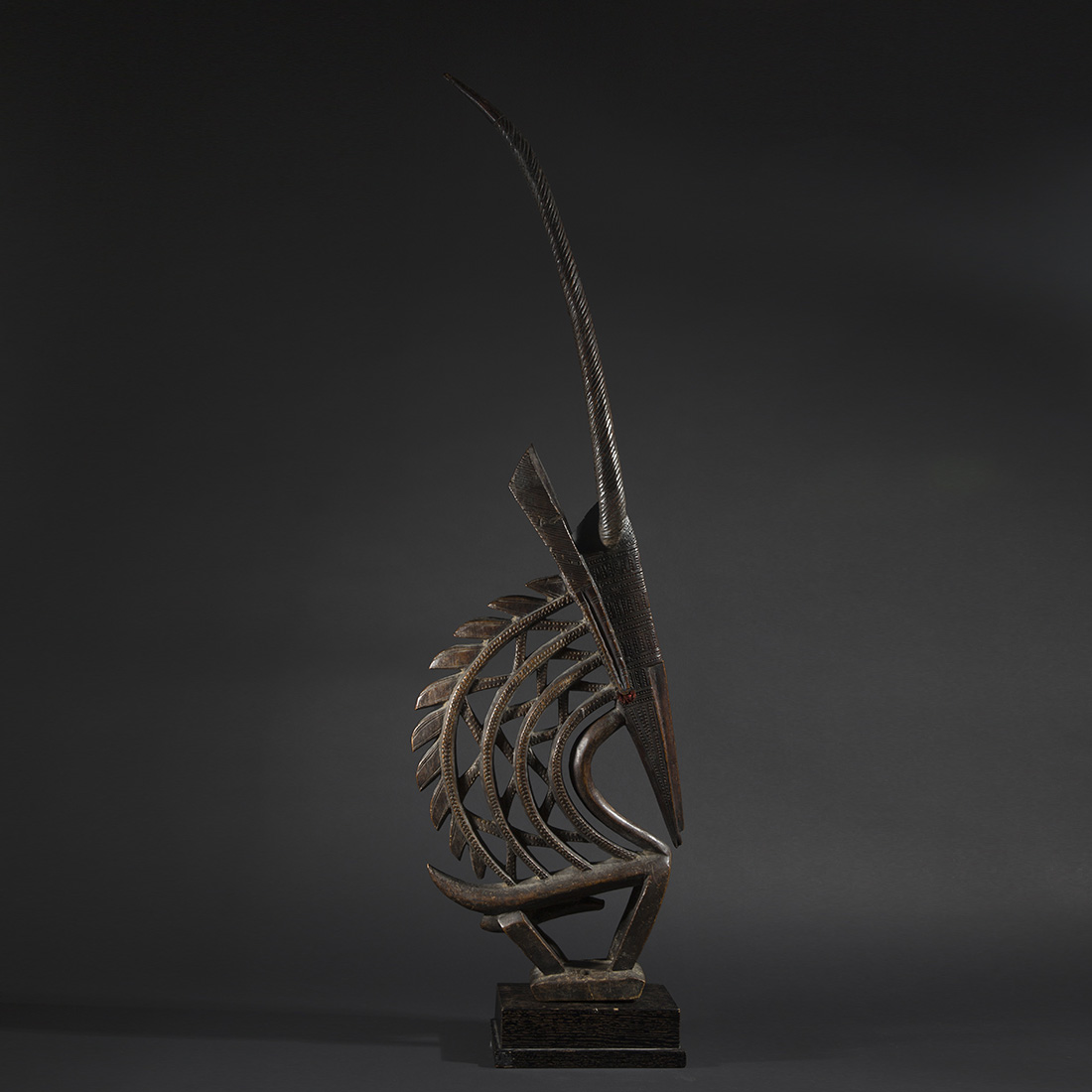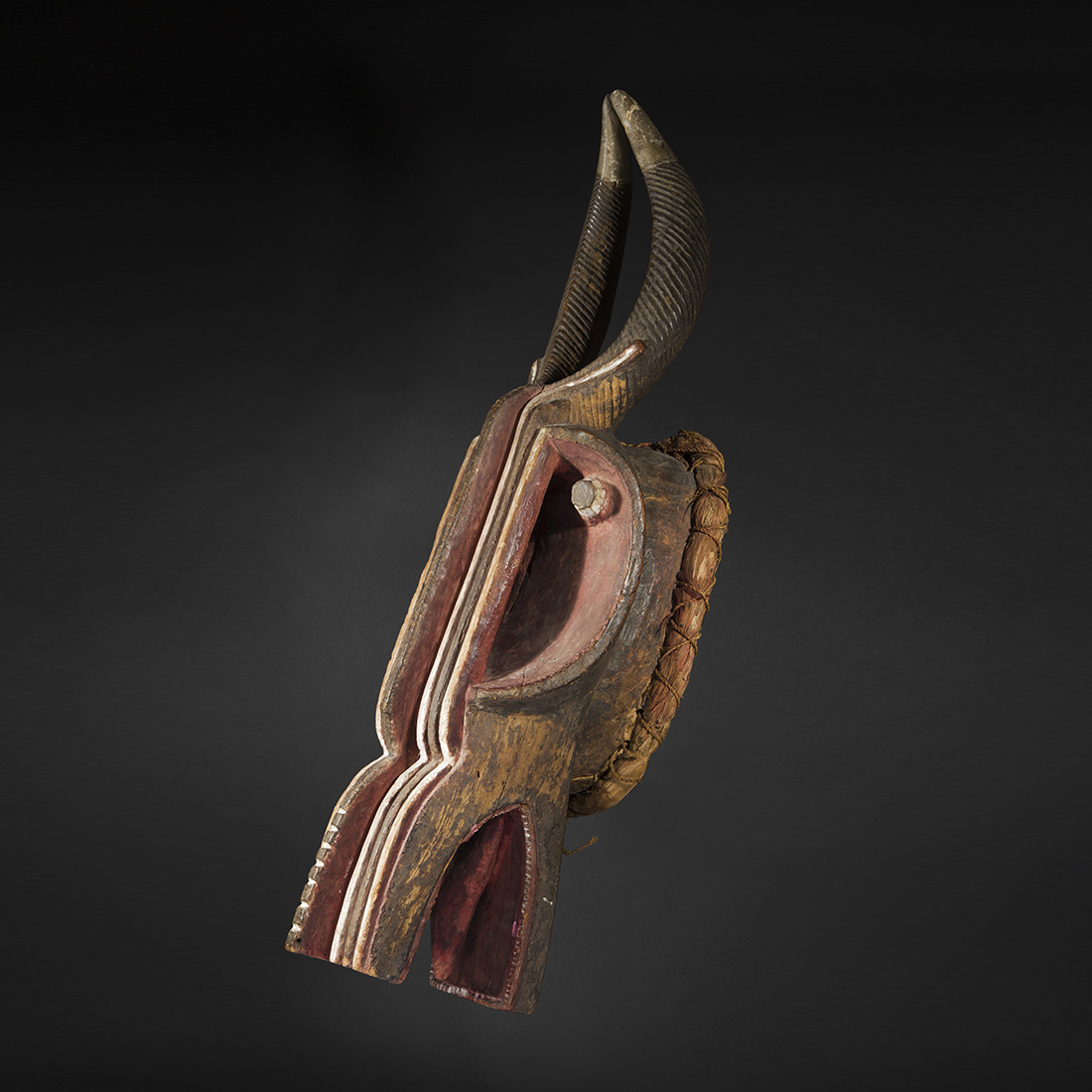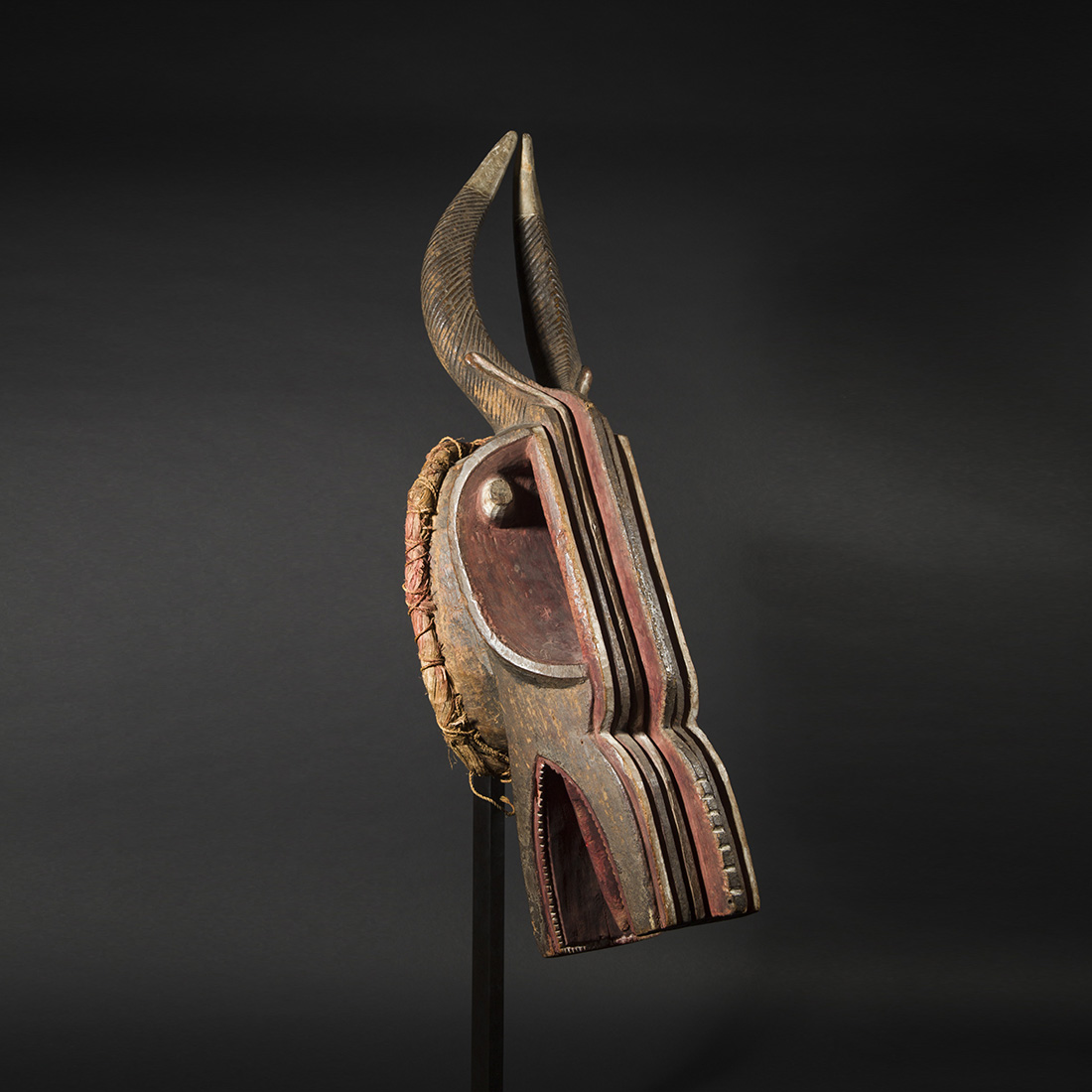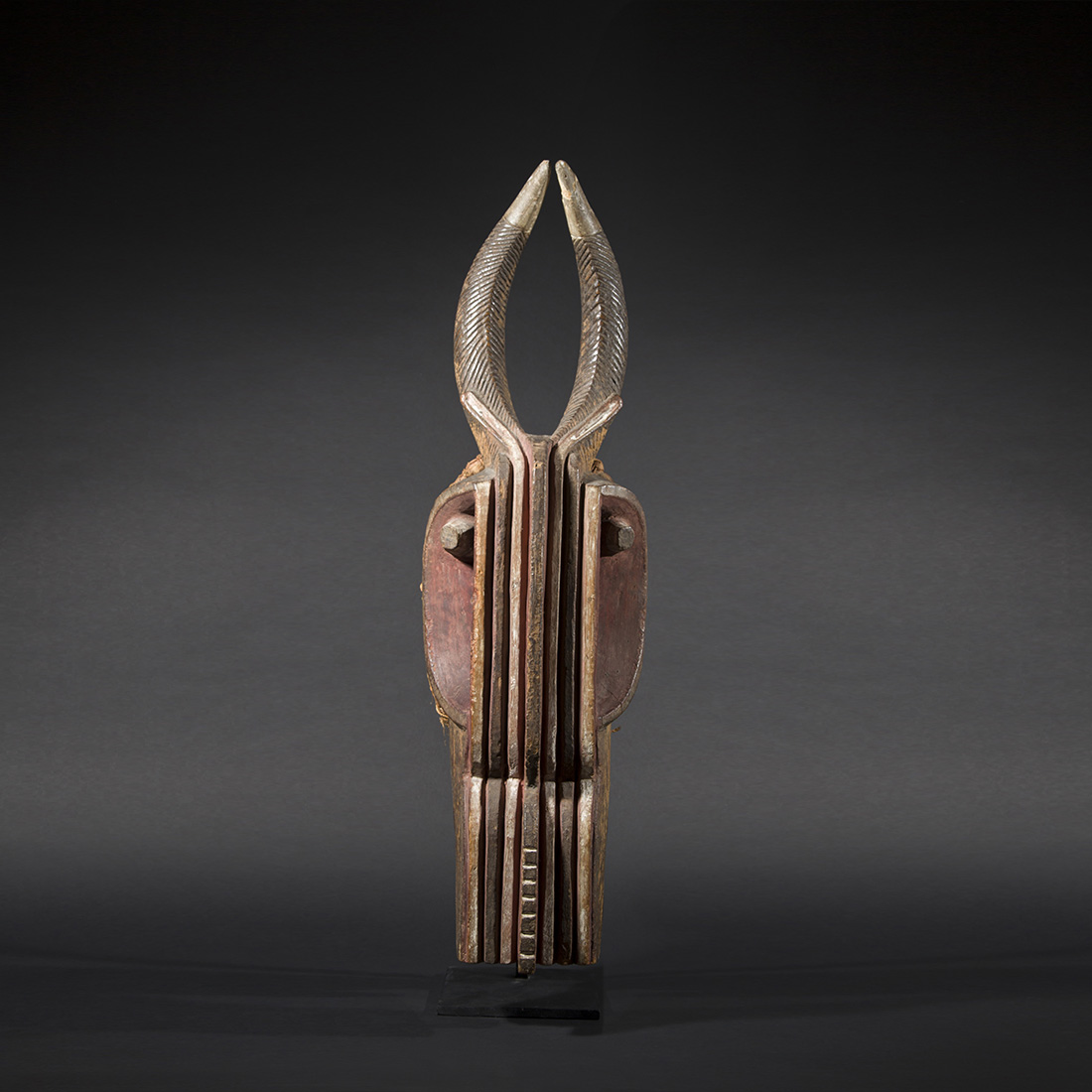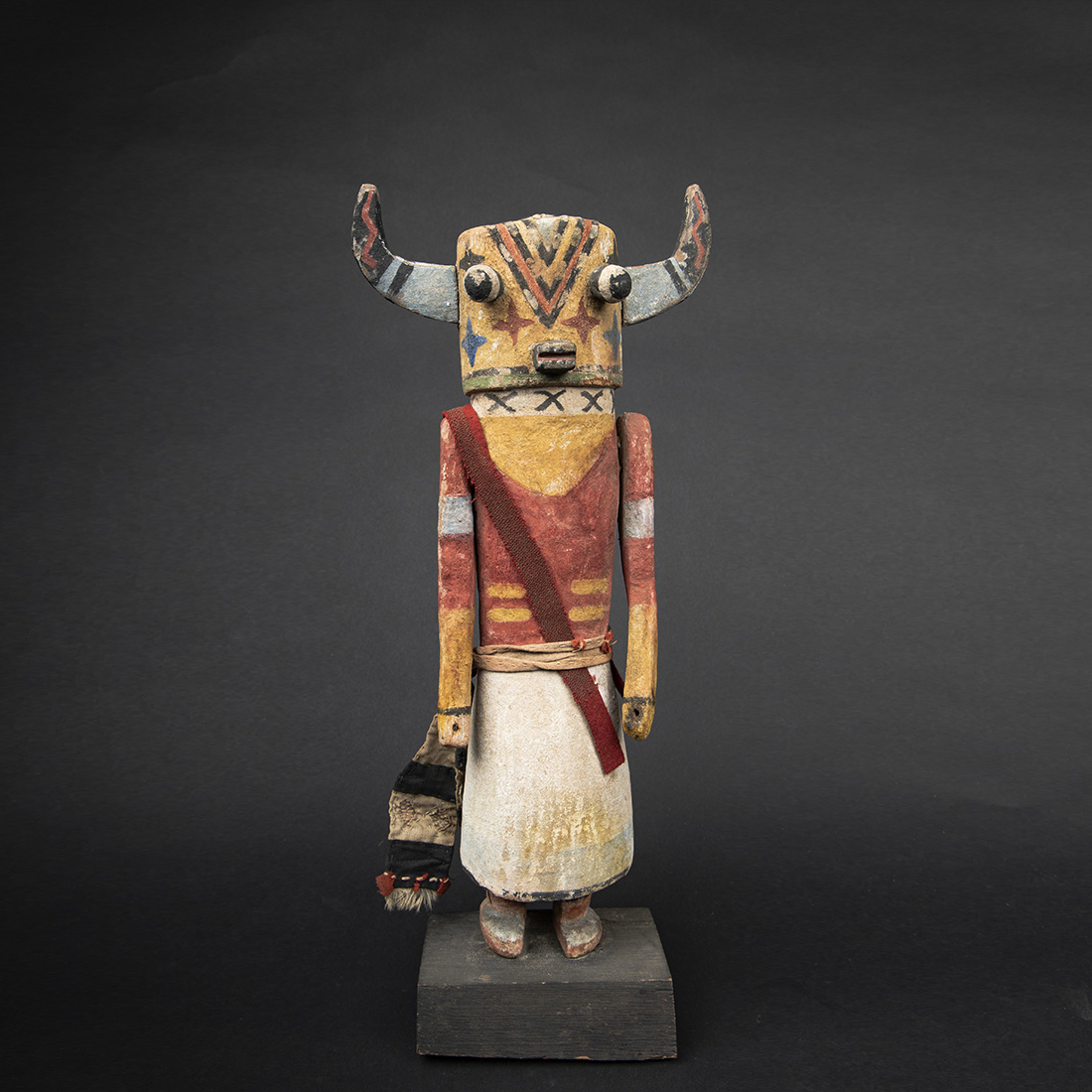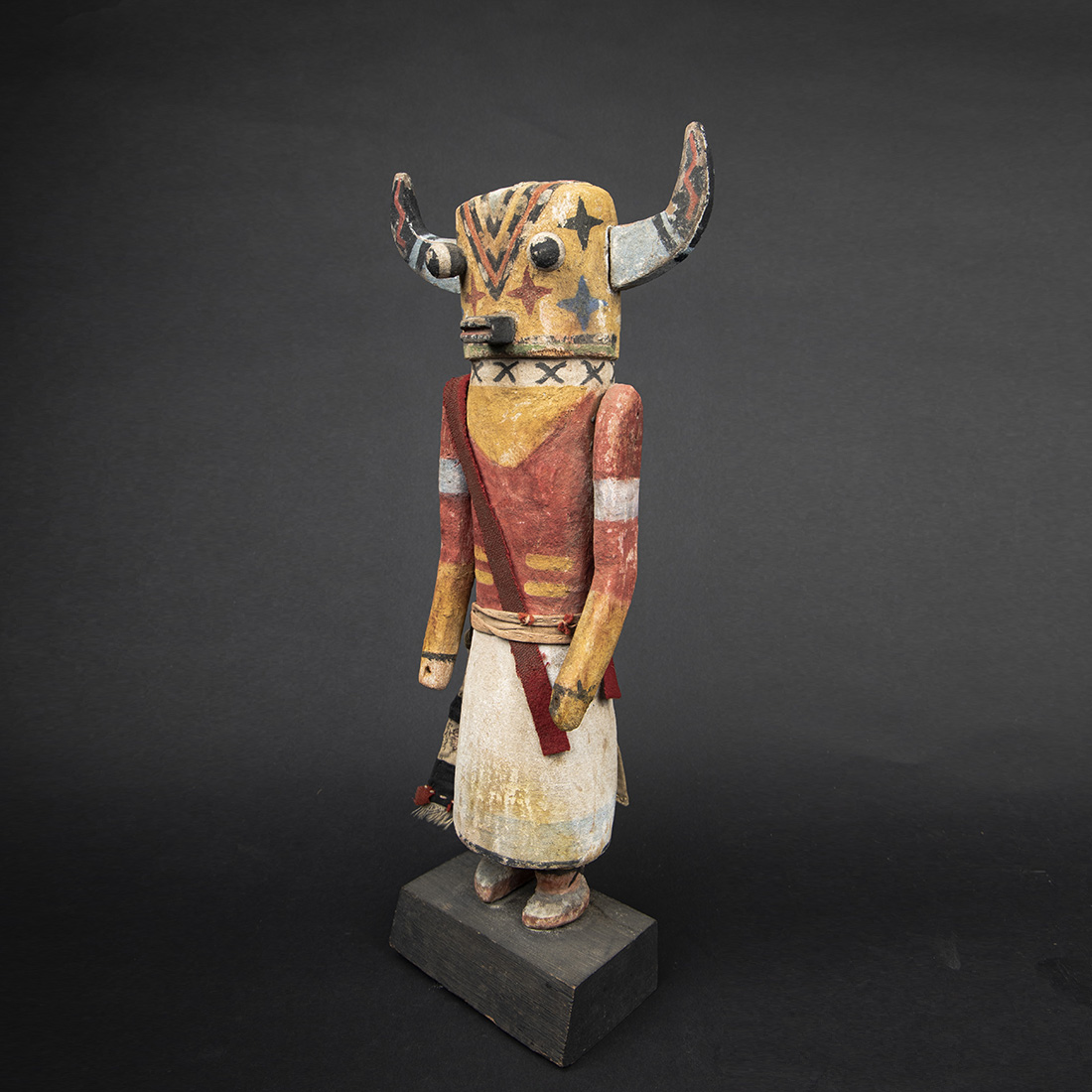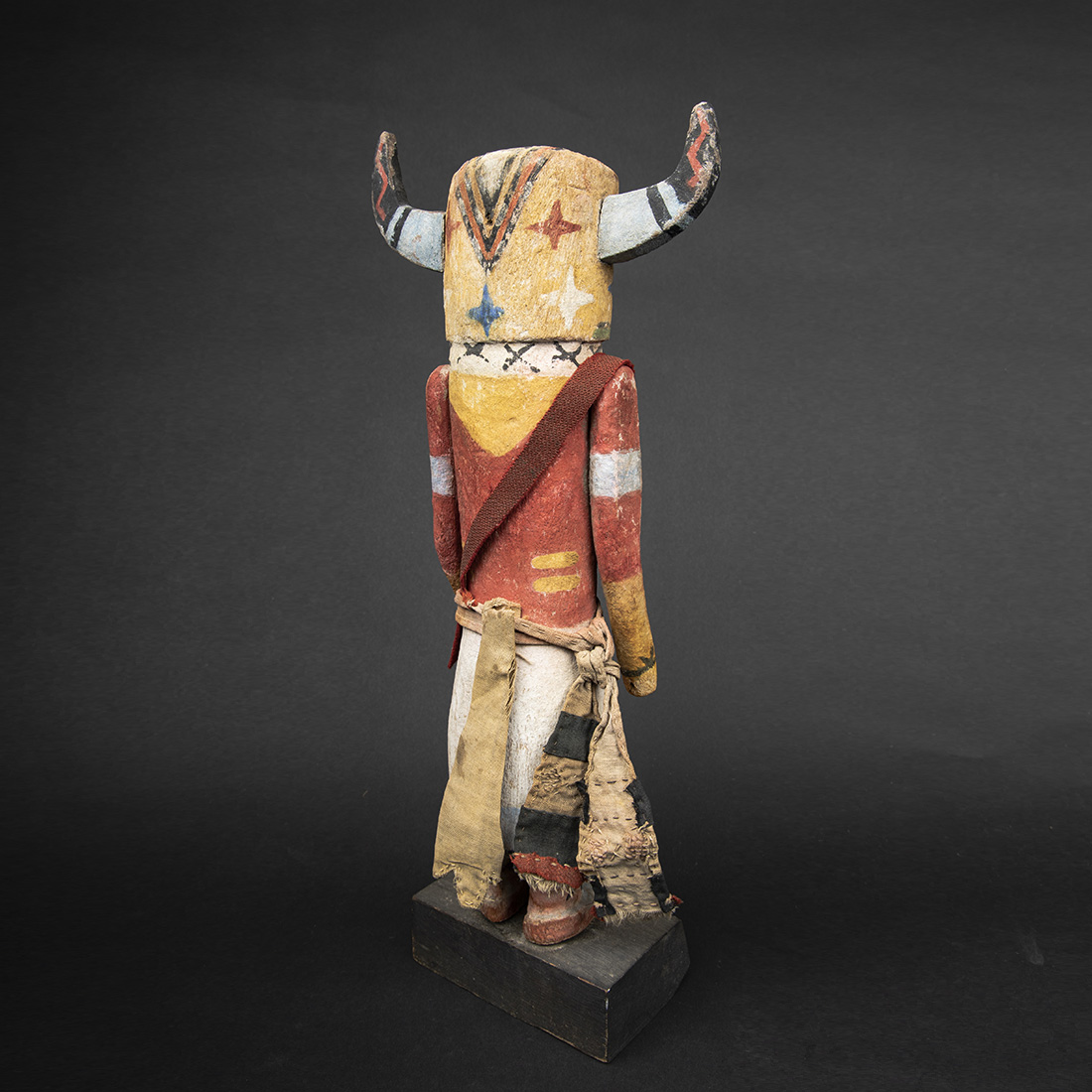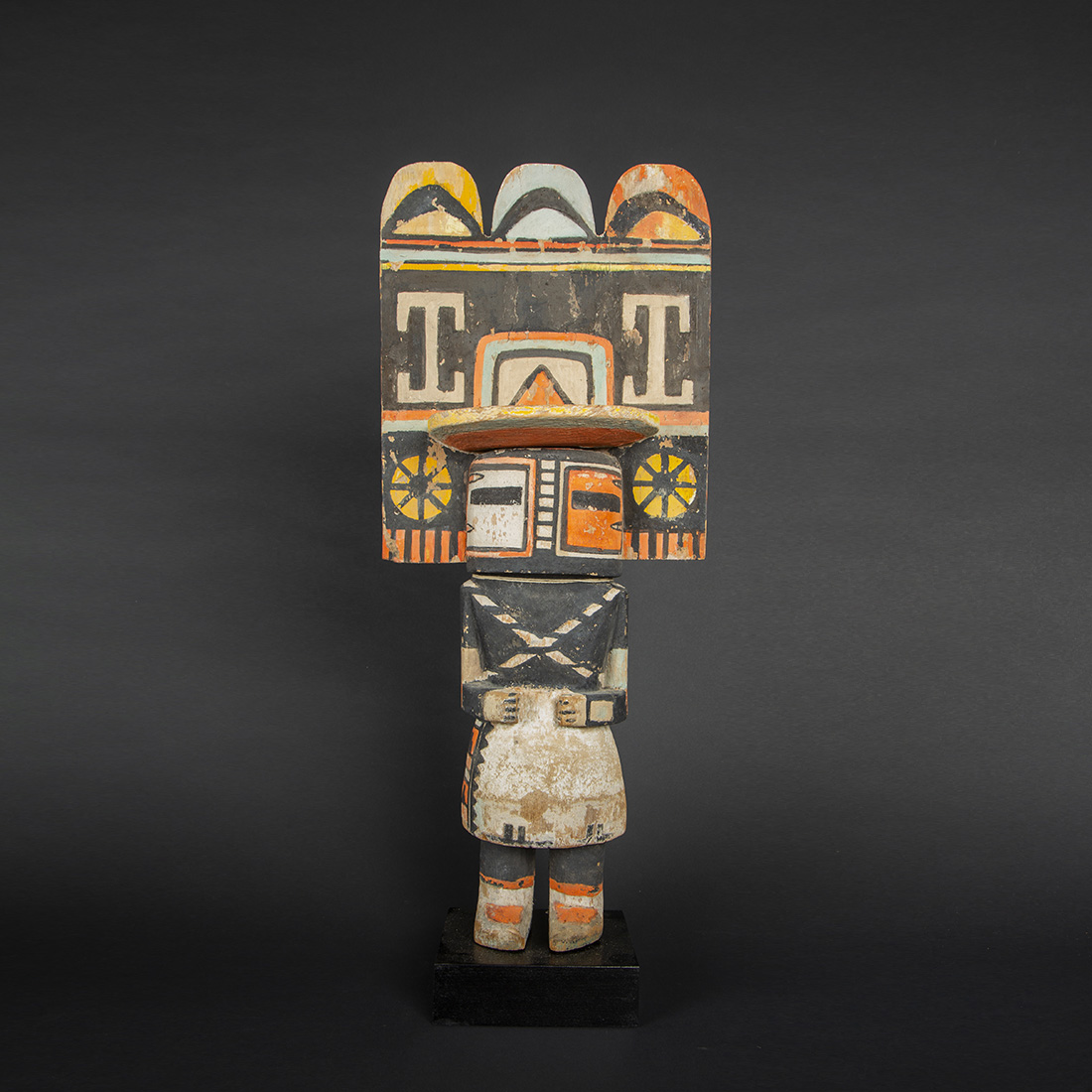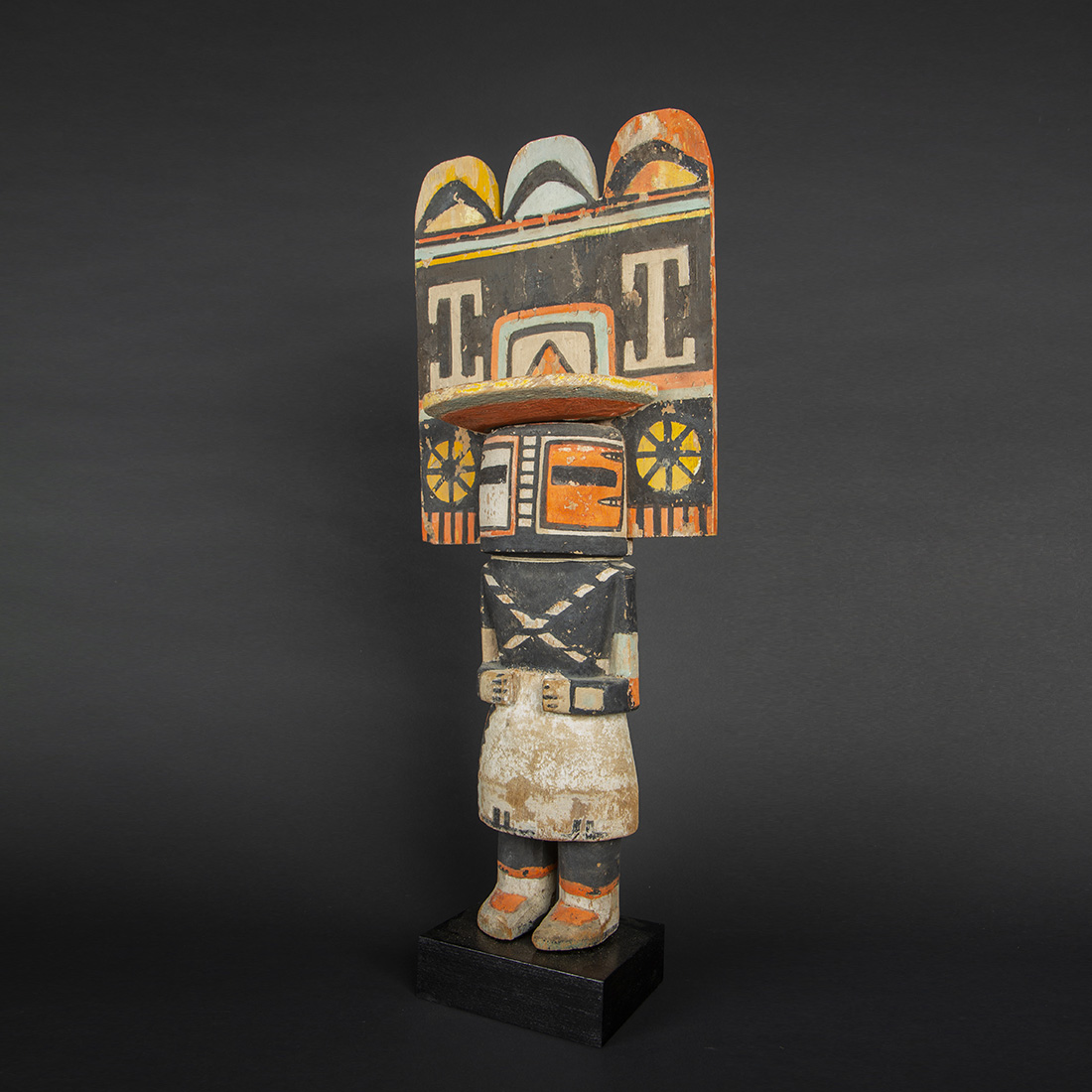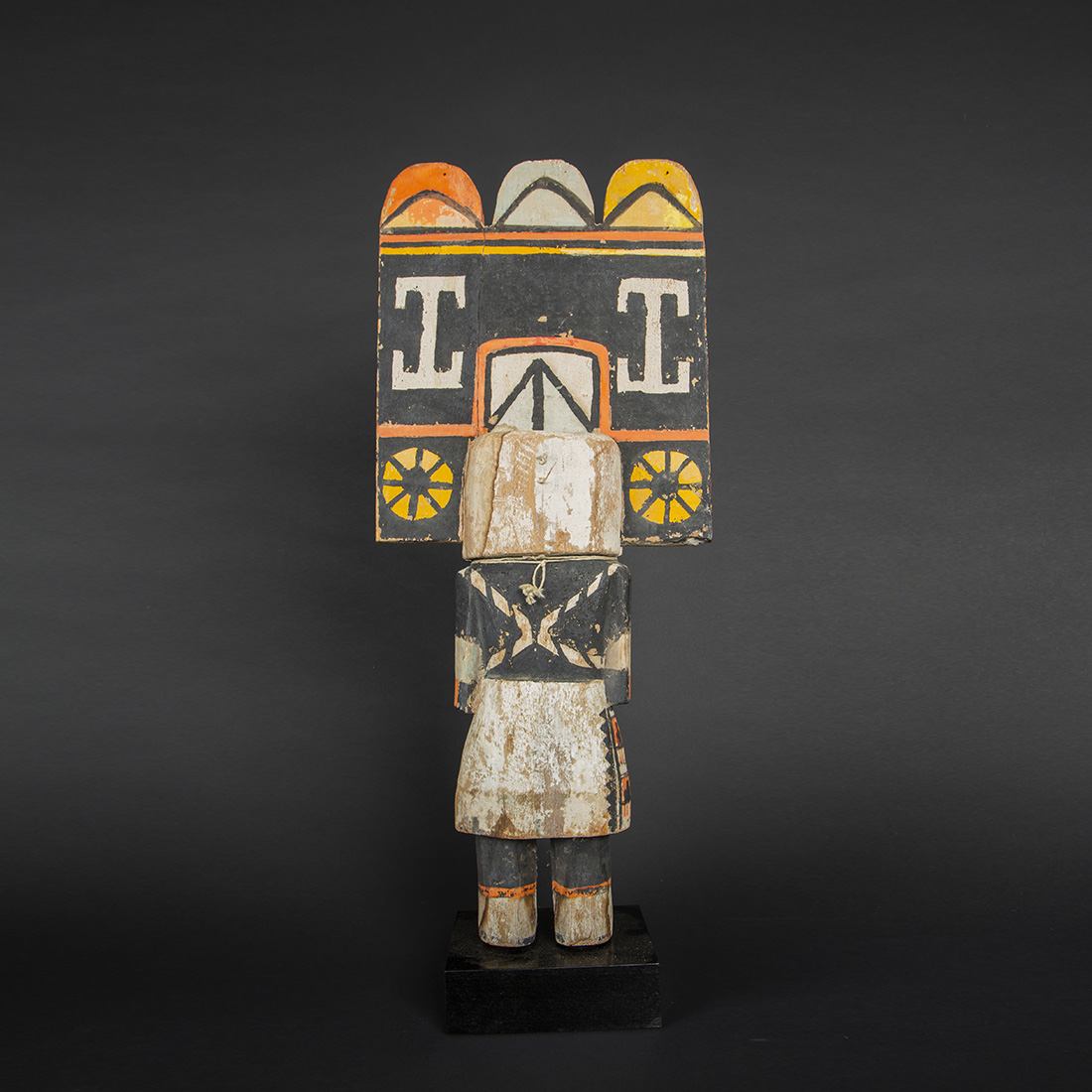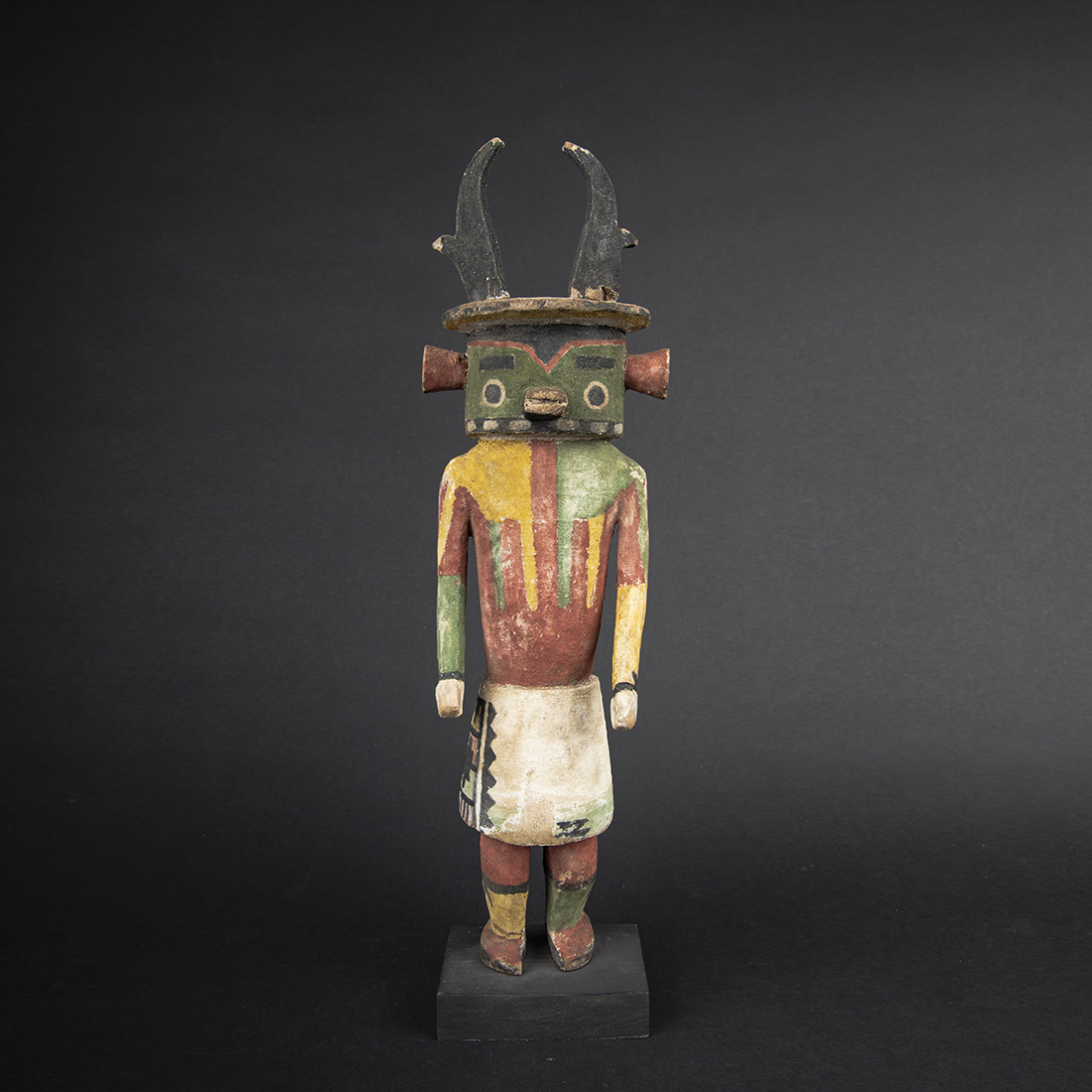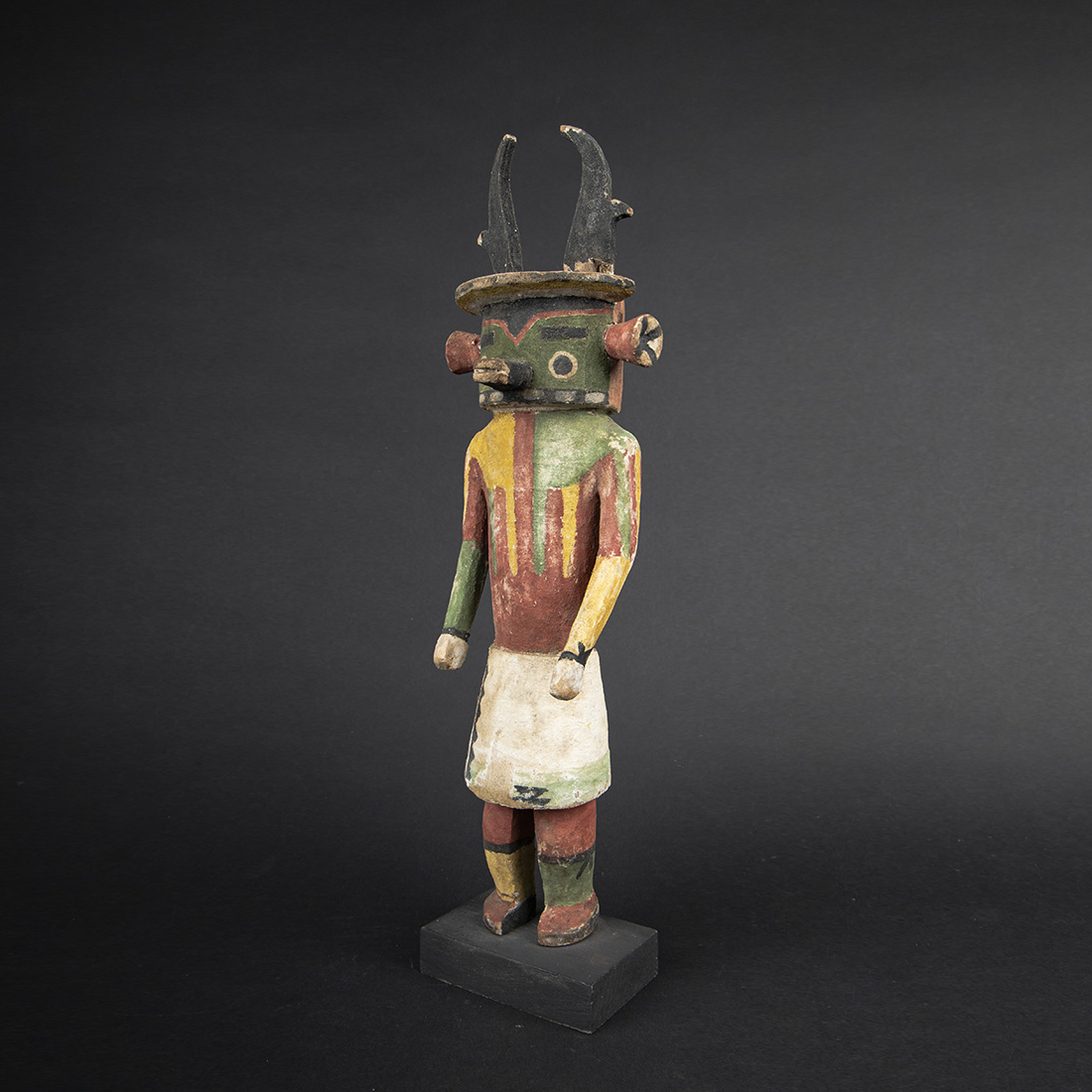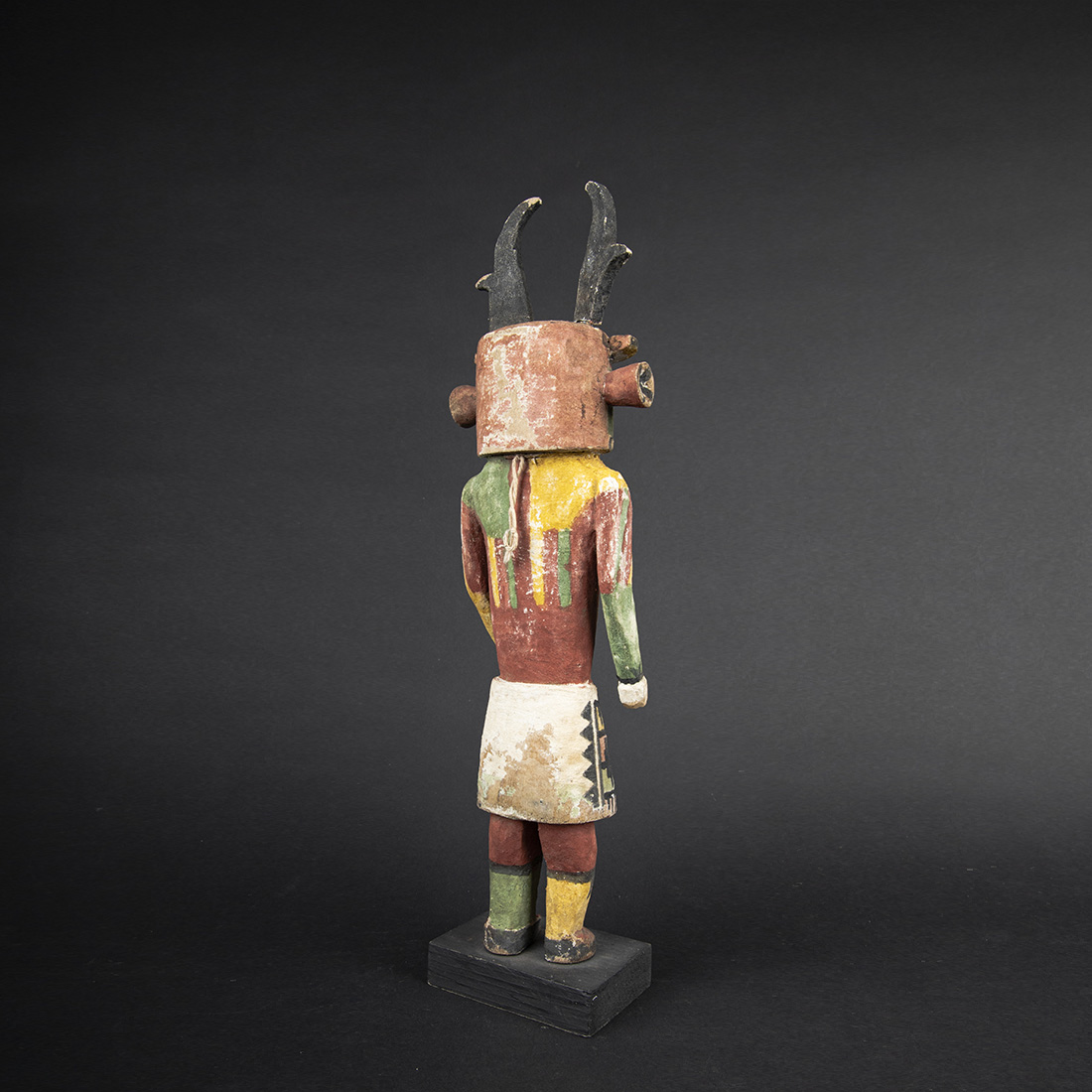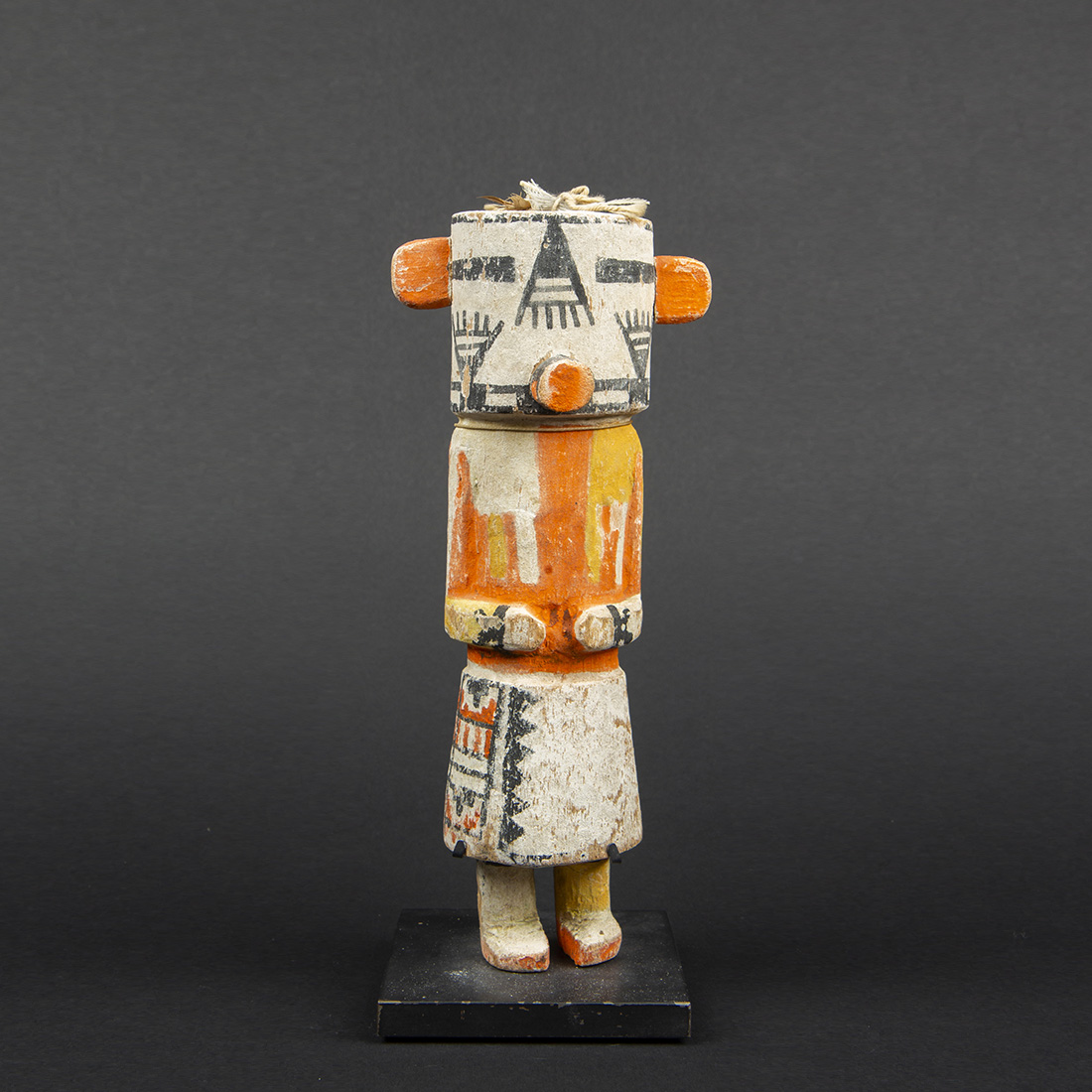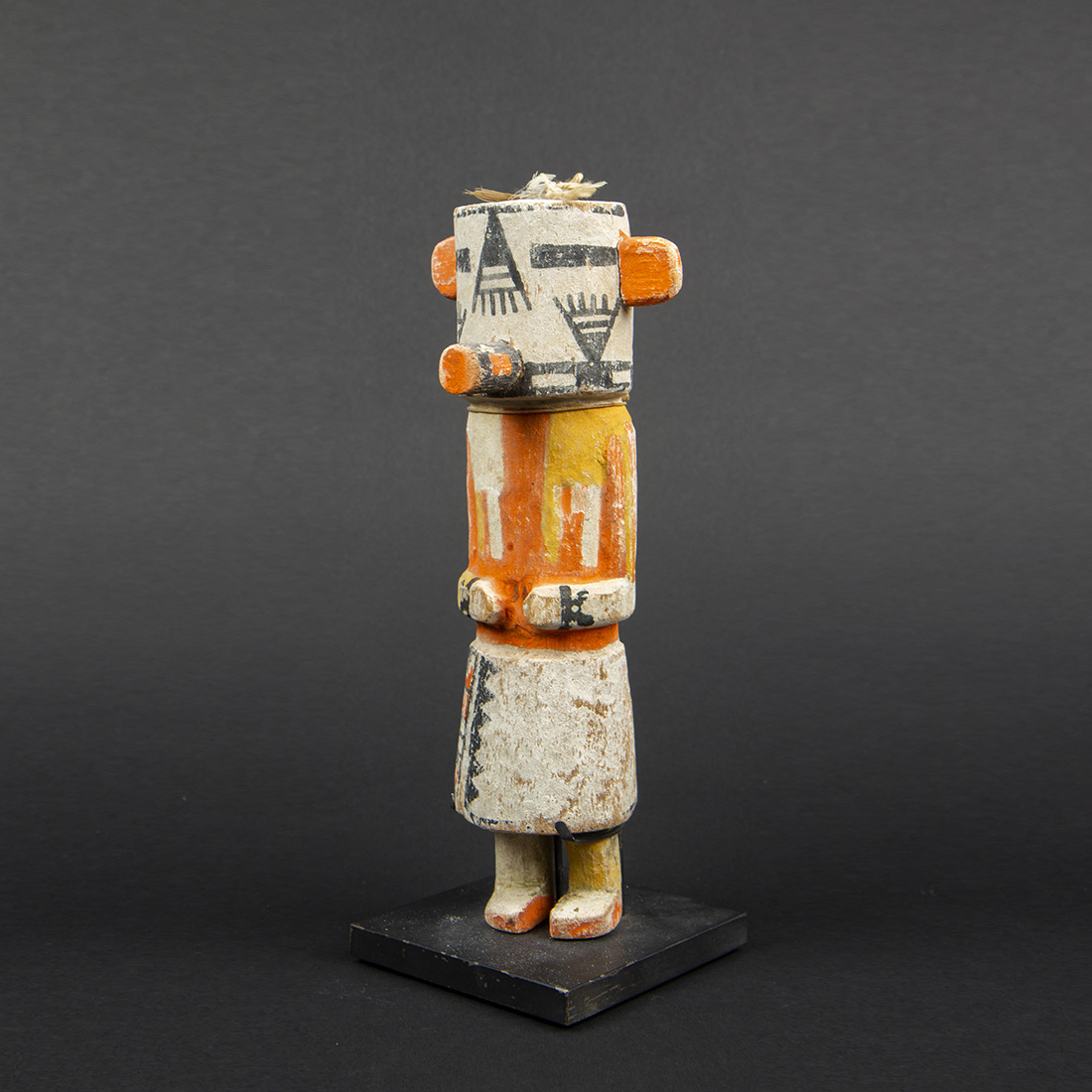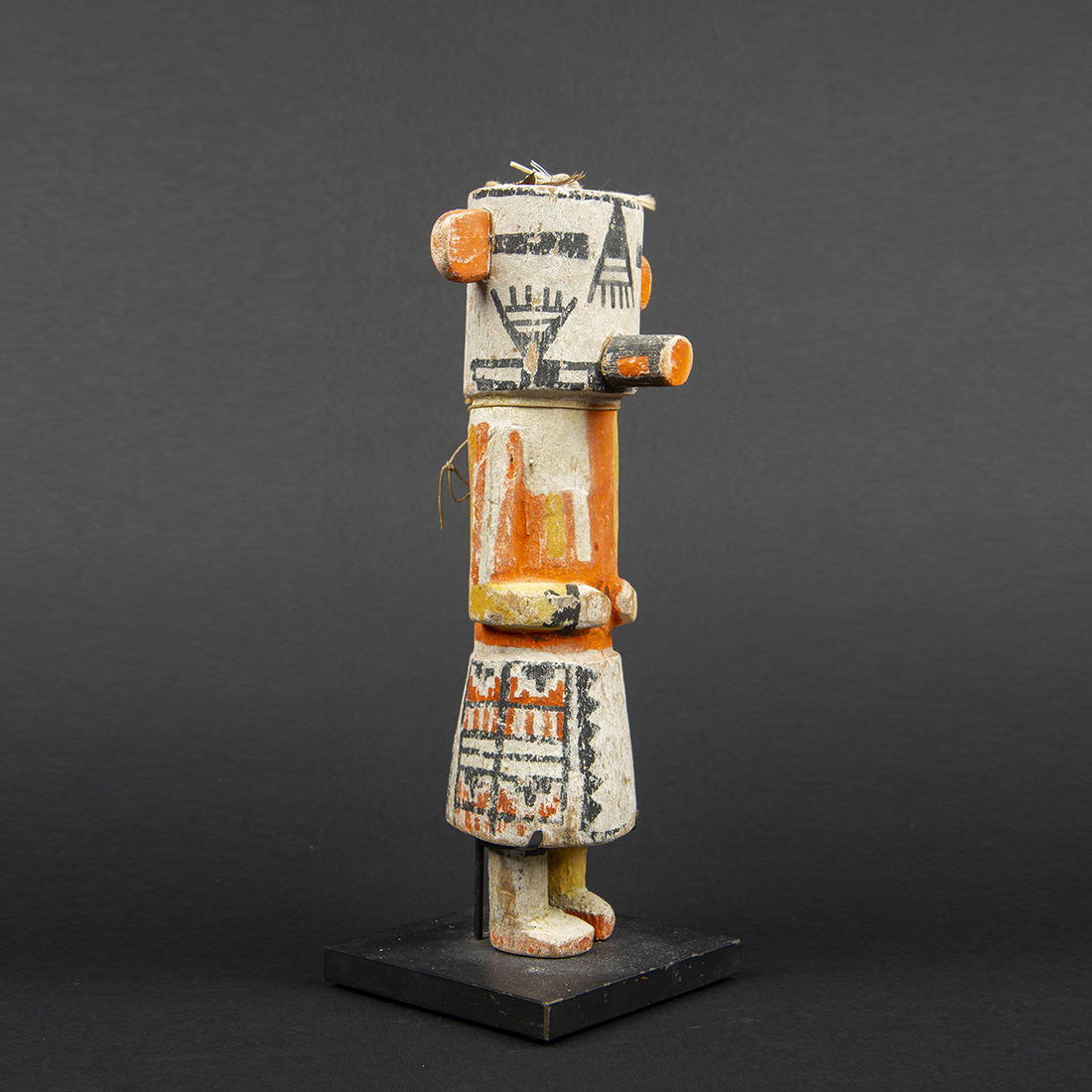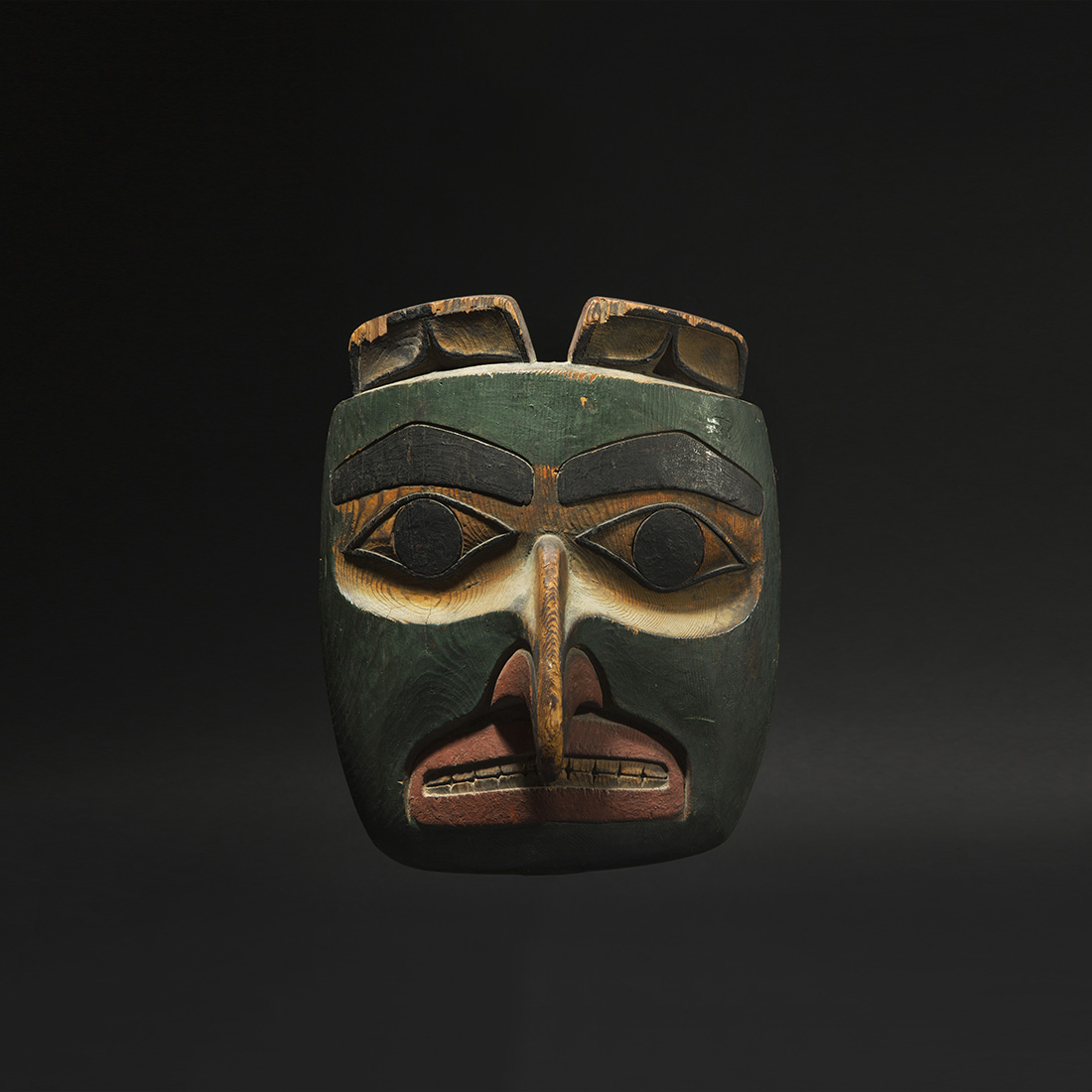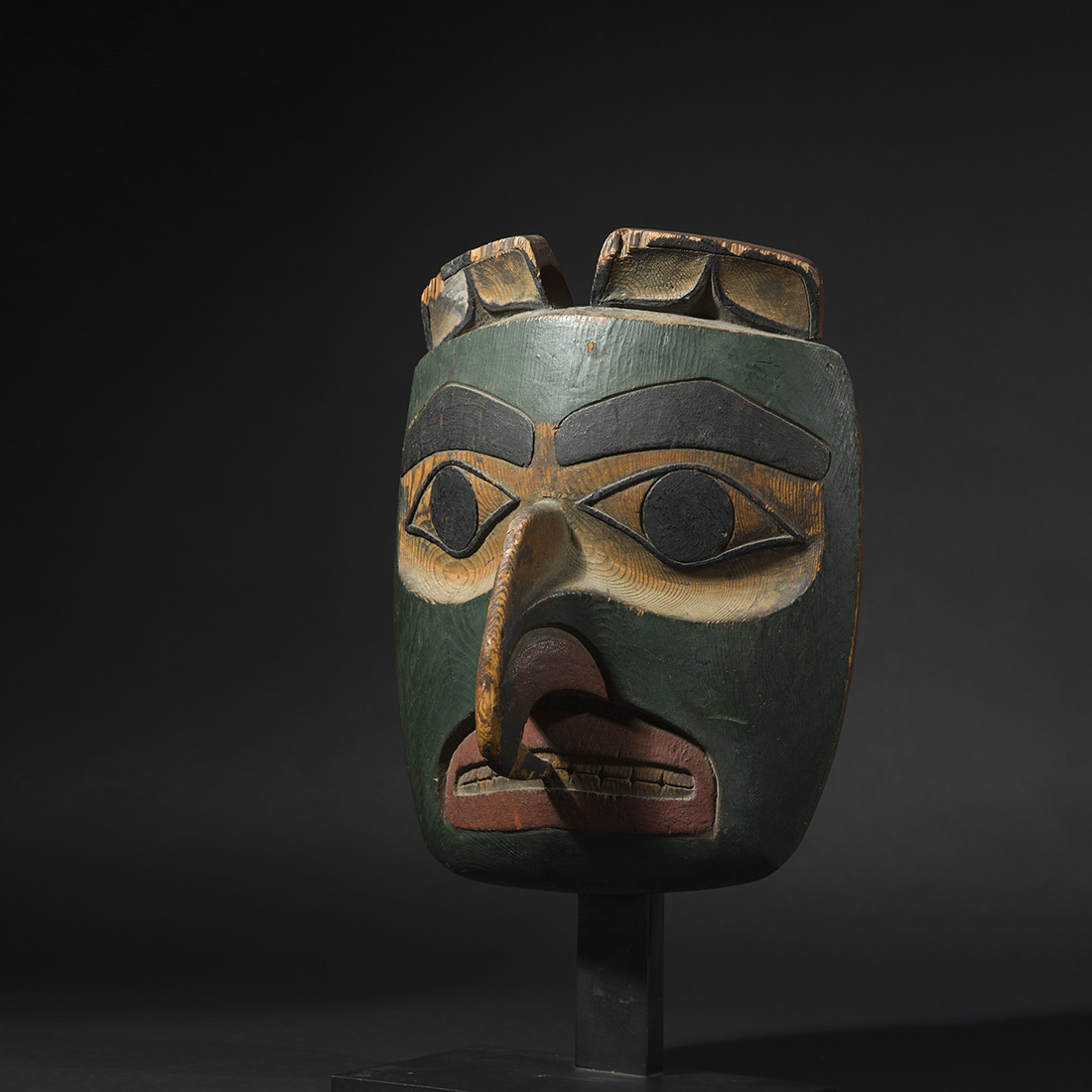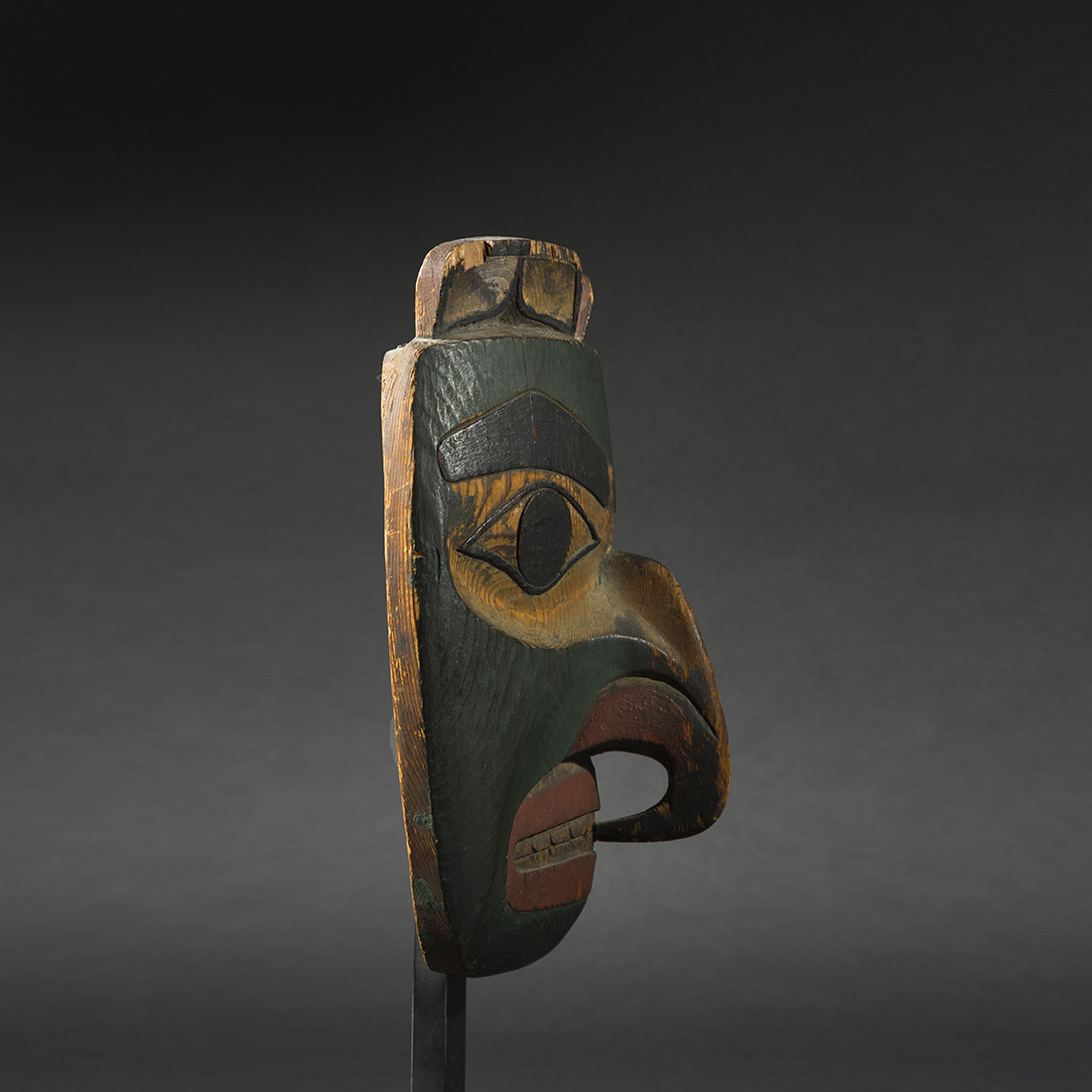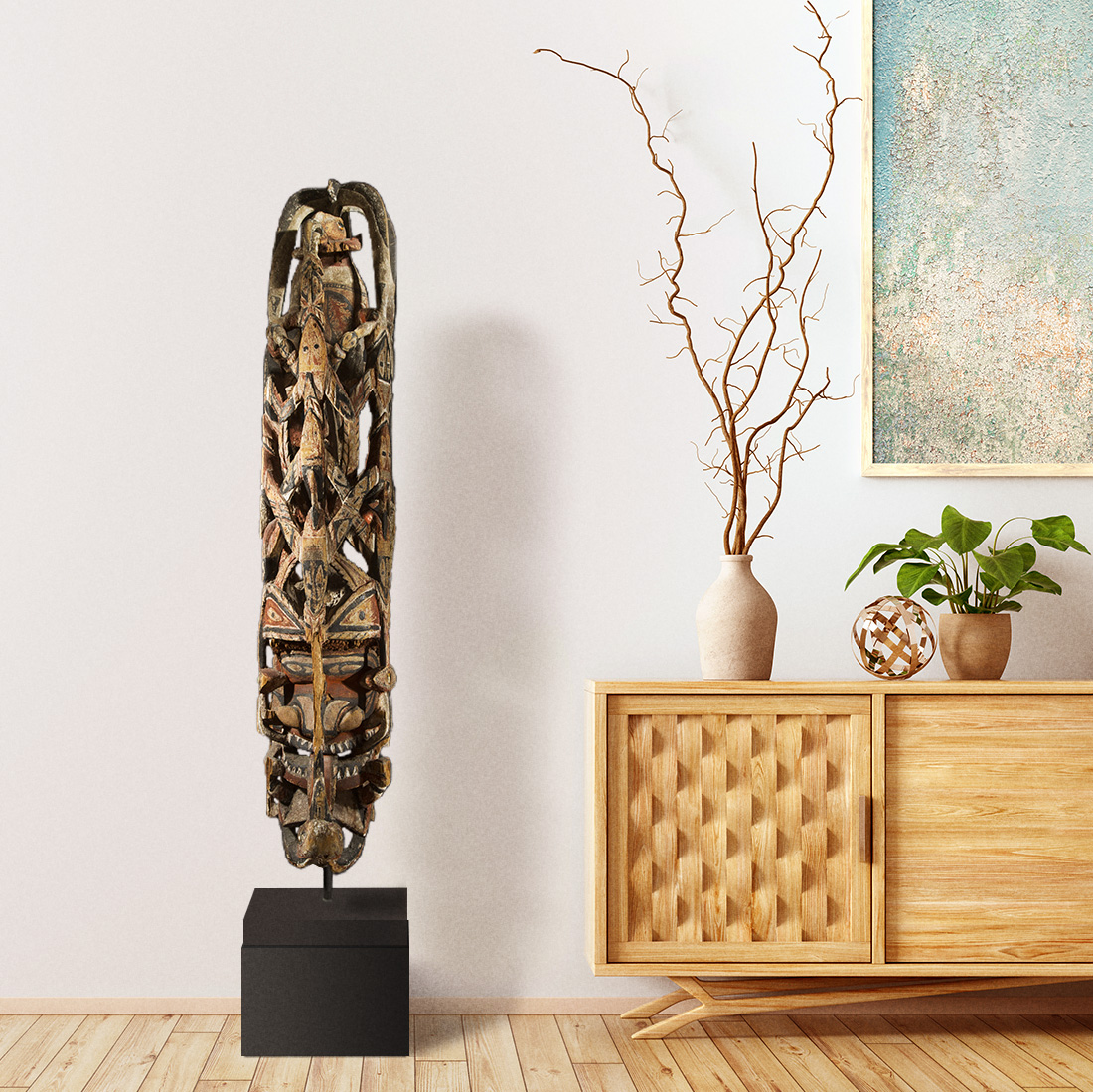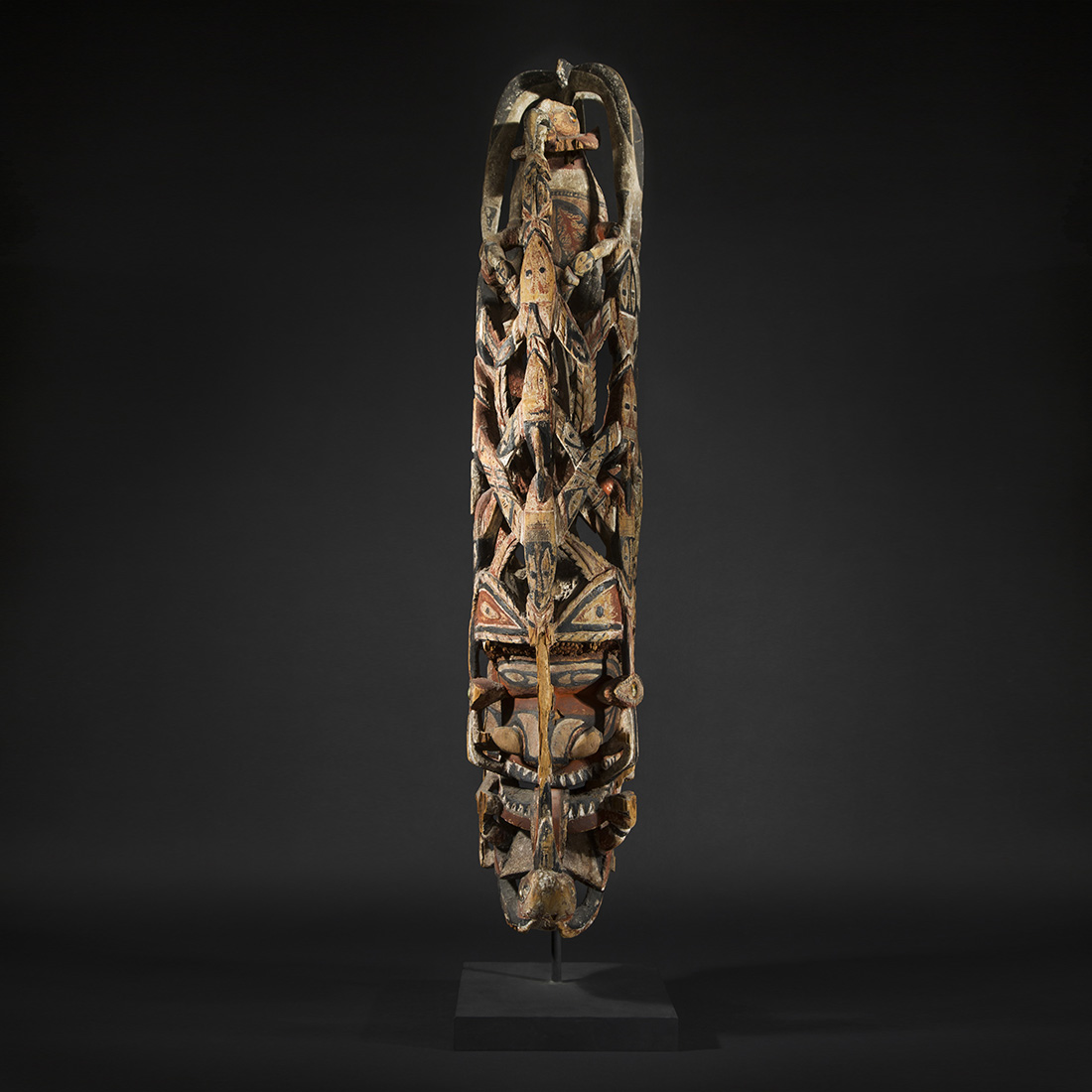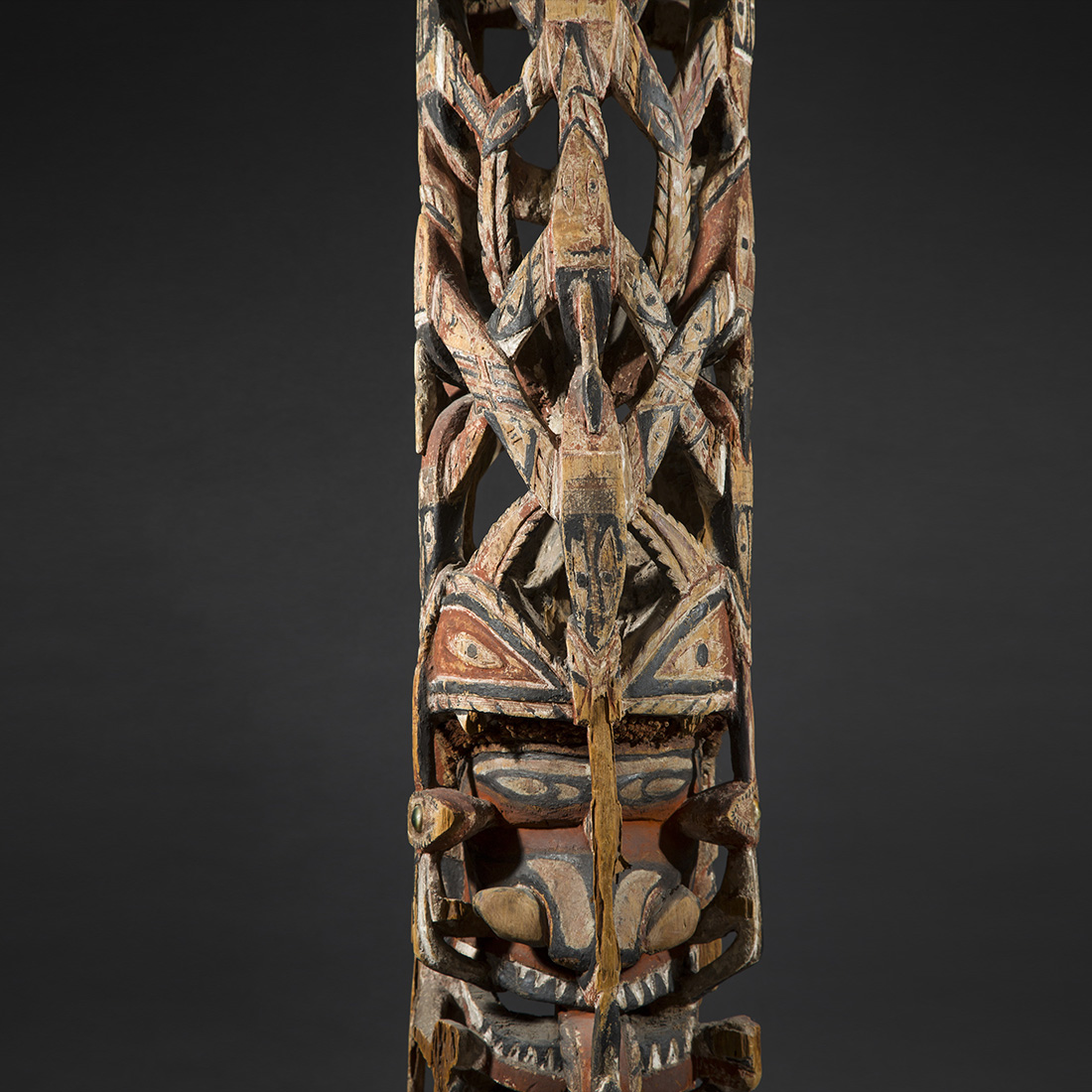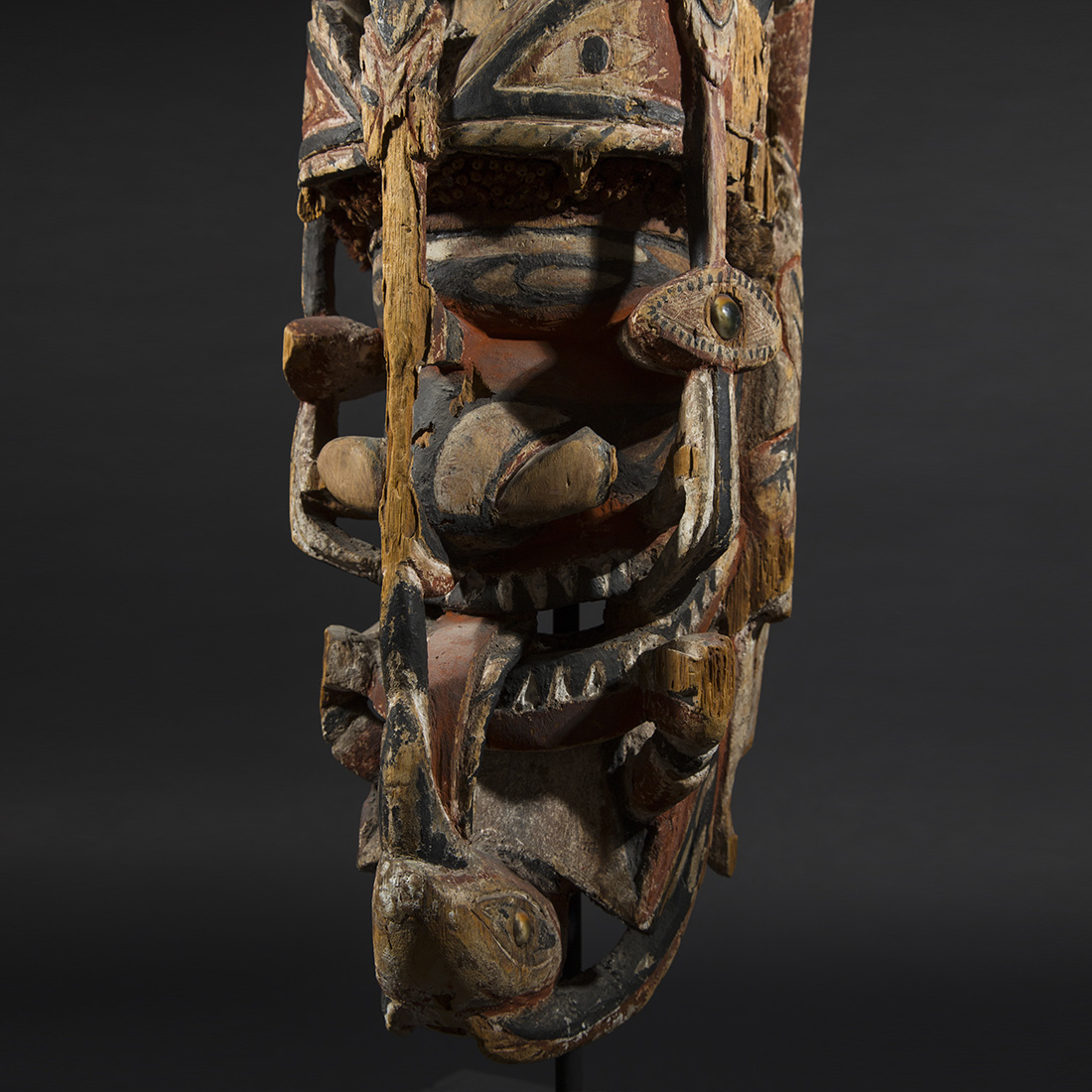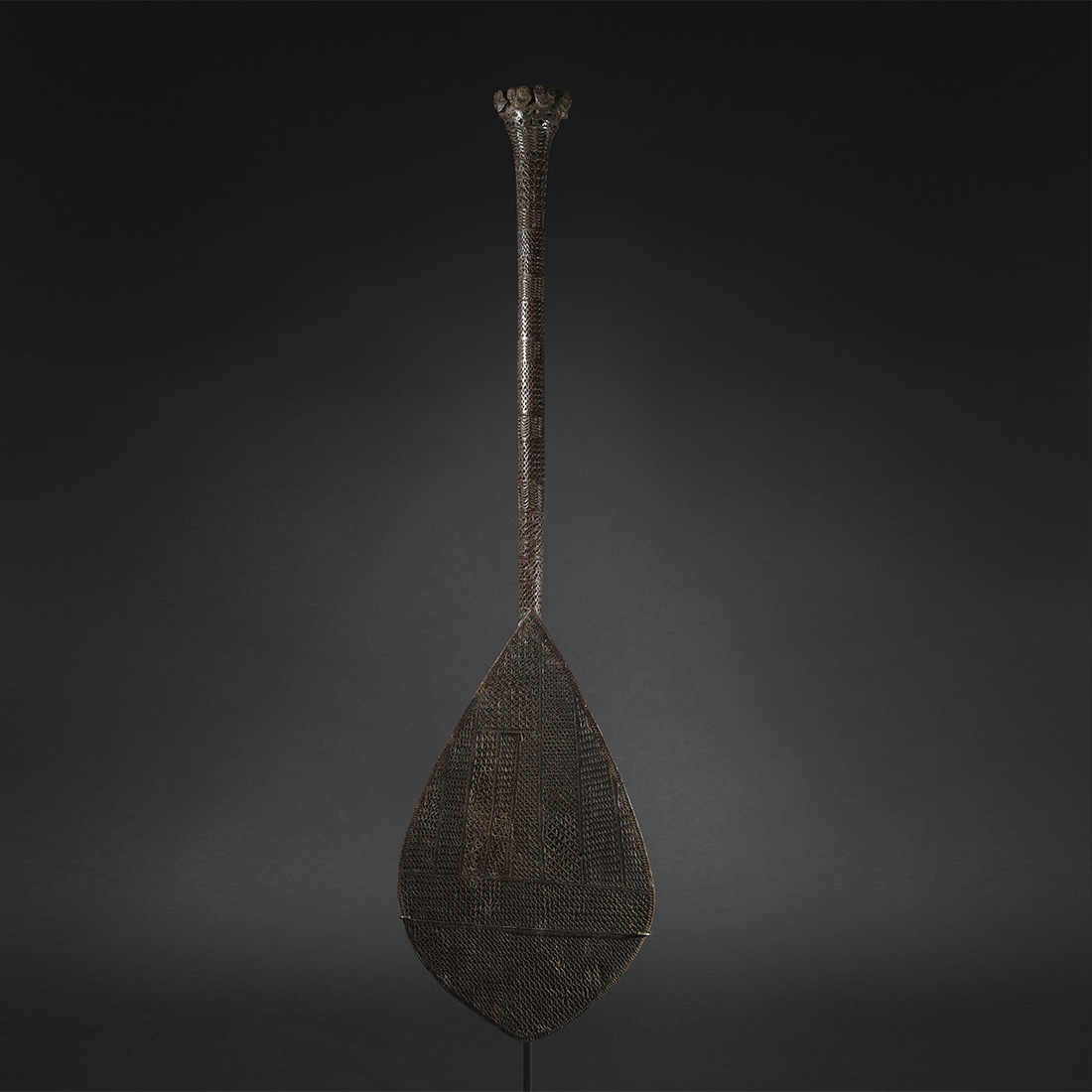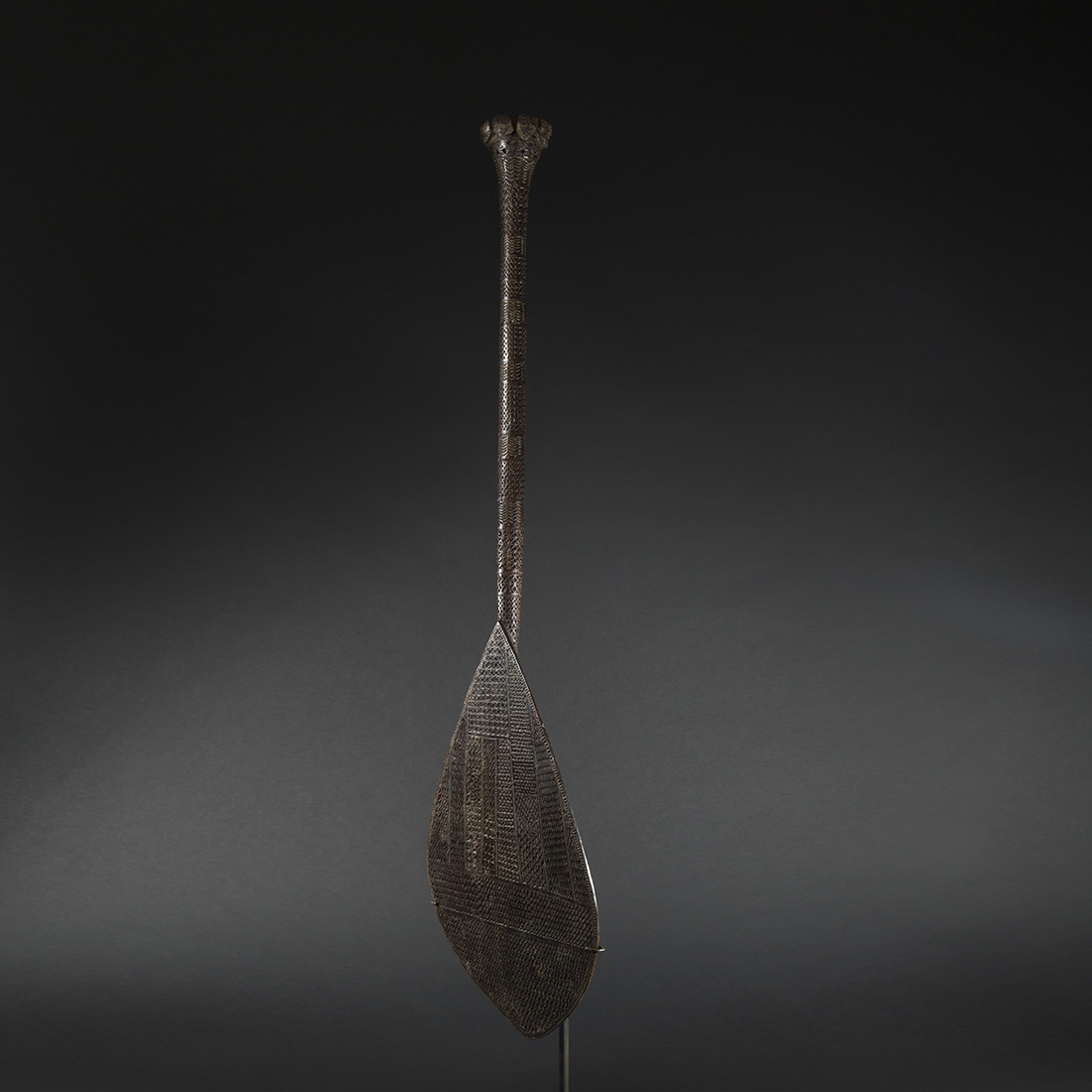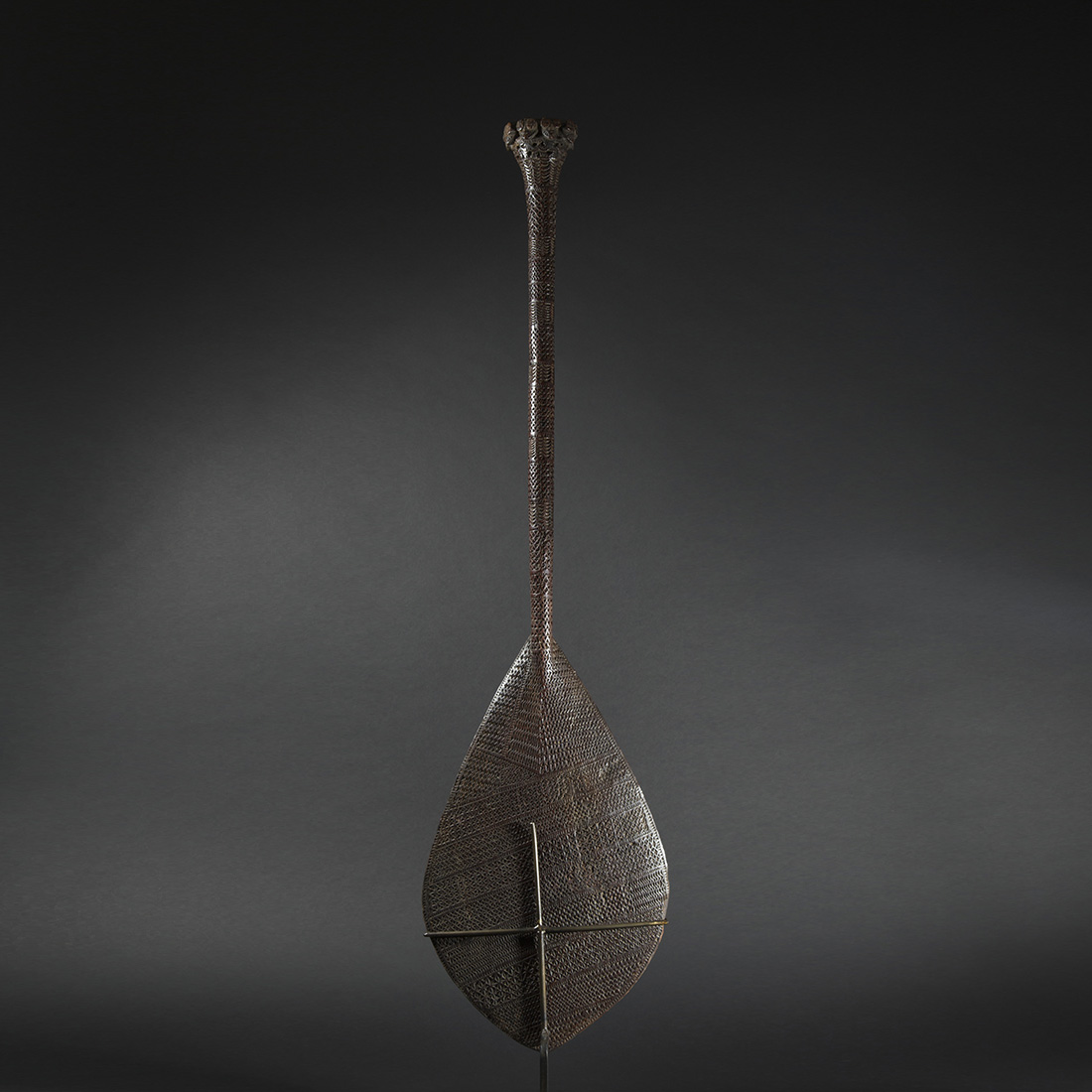Dear friends and collectors,
As you know, art galleries are currently closed, as are museums, and most of us are in lockdown at home 24/7.
In view of this, we thought you might welcome a change of scenery. That is why we have developed a new digital experience for you: a Viewing Room.
In this virtual exhibition space, we invite you to travel the globe, discovering carefully selected artworks including a Baule helmet mask from Côte d’Ivoire, a spectacular Malagan effigy from New Ireland or a shamanic mask from British Columbia.
Of course, our Hopi Kachina dolls will guide & protect you throughout your visit…
Let us make good use of this time to explore, to discover and to share.
We welcome you to our Viewing Room and hope that you will make yourselves at home!
Lwalwa (Lwalu) mask
Democratic Republic of the Congo
Carved wood
Early 20th century
Height: 11 ½ in. (29 cm)
Ex Sotheby’s London, 30 November 1982, lot 112
Ex private collection, Paris
Ex collection Alain Lecomte, Paris
Yale University Art Gallery – The Yale-van Rijn Archive of African Art #0034088
Lwalwa (or Lwalu) art is most famous for the powerful, highly cubistic masks of which this mask is a magnificent example with perfect proportion and elegant lines. While the nose-profile refers to the long beak of the calao bird, the characteristic protrusions on the temples represent skin decoration. According to Ceyssens (in Tervuren, 1995, p. 328), above and beyond their pure geometric lines, Lwalu masks are a beautiful embodiment of the balance between the human and animal realms, their elaborate formal structure playing on a subtle balance between the tension of the concave planes, the starkness of the lines and the fullness of the volumes.
According to Timmermans (1967), who was working from Maesen’s field notes, before Lwalu face masks were used for recreational performances, they were originally used for boys’ rites of passage within the ngango institutions, and were also involved in hunting rituals to appease the spirits and seek their blessings.
Since they were brought to light in the 1930s, Lwalu masks have been praised for their novel form.
« Étude pour La Femme à la tresse », 1914
Jacques Lipchitz (1891–1973)
Pencil and watercolor on paper, 20 x 12 cm
Signed (upper right)
Exhibitions and literature:
Hommage à Lipchitz, œuvres de 1914 à 1963, Galerie Marwan Hoss, 1988, n° 2
Galerie Marwan Hoss, Paris, catalogue from Cimaise n° 206, juin – août 1990, p. 5
Marlborough Fine Art, London, inv. 32496.1 (label on the back)
Marlborough Galerie A. G., Zürich (label on the back)
35,000 €
Ritual figure iagalagana
Mumuye, Nigeria
Carved wood
Early 20th century
Height: 31 ½ in. (80 cm)
Ex collection Robert Duperrier, Paris
Ex collection Hubert Goldet, Paris
Collection Hubert Goldet auction sale, Maison de la Chimie, June 2001, lot 131
28,000 €
The Mumuye live in the foothills of the Shebshi Mountains near the banks of the Benue in eastern Nigeria. This agrarian people is comprised of three different dialectal groups, and was long unknown to Westerners, who discovered their art only in the late 1960s.
The Mumuye used sculptures called Iagalagana in different rituals: the figures played a central role in ancestor worship and in curing ceremonies. They served as intercessors between the spirit world and that of men, and served as proof of the high status of the family that owned them.
This large figure is characterized by its remarkable dynamism, reinforced by the angular breaks in the rhythm of the piece.
Mumuye art is strikingly reminiscent of certain aspects of cubism or of the works of major 20th century artists like Henri Moore or Alberto Giacometti.
Ci Wara headdress
Bambara, Mali
Carved wood
Early 20th century
Height: 41 ¼ in. (105 cm)
Ex collection Sako Diane, USA
Ex collection Pace Gallery, New York (inv. #53-1558)
Ex collection GvR family, Brussels
Ex collection David Serra, Barcelona
Sold
The majority of Bamana (Bambara) people are subsistence farmers.
As stated by the Metropolitan Museum of Art in New York, local oral traditions credit a mythical being named Tyiwara or Ci Wara- a divine being half mortal and half animal – with the introduction of agriculture to the Bamana. These headdresses, also called Ci Wara, are carved to honor that original mythical being.
Ci Wara masquerade performances begin outside the village in the fields and gradually travel to the village center. Women also play an integral part during the masquerading ceremonies by singing songs of praise for Ci Wara and the hard-working farmers.
On this superb, large headdress, the juxtaposition of negative and positive space and two-dimensional sculptural design is superb.
Goli Glin mask
Baule, Ivory Coast
Carved wood and pigments
Early 20th century
Height: 32 ½ in. (83 cm)
Ex collection Maurice Nicaud, Paris in the 1960s
Ex Loudmer, Paris, “Arts Primitifs”, May 14 , 1990. Lot 160
Ex Sotheby’s Paris, June 15 , 2004, Lot 121
Yale University Art Gallery GvR Archive 0052596
18,000 €
This Baule ritual mask depicts “Goli Glin”, a male spirit and father figure. This intermediary between the world of the living and that of the spirits provided protection and assistance against all types of danger, war and epidemics.
In terms of iconography, it combines the features of a bushcow, the horns of an antelope and the snout of a crocodile. It is painted red, a symbol of blood, strength and power.
Pablo Picasso owned a Goli Glin mask which notably fueled his inspiration in his cubist and later works, including his 1937 masterpiece “Guernica.”
Kachina doll – Ho’ote Katsina
Volz-type Yellow Ho’ote kachina doll
Hopi
Arizona, USA
Carved wood (cottonwood), fiber, cotton and natural pigments
Circa 1890-1910
Height: 12 ¼ in. (31 cm)
Ex San Diego estate, USA
By descent
Sold
Kachina”: one word says it all! For the Hopi people of Arizona in the American Southwest, “Kachina” (plural “Katsinam”) means wooden statuette, masked dancer or deity.
Kachina dolls were given to children, and constituted a pedagogical tool allowing them to familiarize themselves with the spiritual world and perpetuating knowledge of the founding myths on which their society was based.
Objects of tradition and of education, tools to remember and works of art in their own right, kachina dolls give vibrant testimony to the traditions and secret beliefs of Native Americans of the Southwest.
Ho’ote Katsina is a particularly benevolent spirit for the Hopi. This Kachina brings prosperity to the members of the kiva and to the entire village. Ho’ote appears frequently in Mixed dances on the various mesas and especially during the Niman ceremony in July. His appearances are said to be prayers for the blooming of flowers in the spring.
In terms of style and construction, this kachina figure is related to « Volz type » dolls.
Frederick Volz (1856-1913) owned a trading post in a Hopi village. In 1901, he acted as a buyer for the entrepreneur Fred Harvey, collecting nearly 400 kachinas. Major American museums (The Field Museum, The New York Museum of Natural History, The University of Pennsylvania Museum, etc.) subsequently sought to acquire examples of these “Volz” kachinas.
Kachina doll – Large Sio Hemis Katsina
New corn kachina doll
Hopi, Arizona, USA
Carved wood (cottonwood) and natural pigments
Circa 1920
Height: 19 ½ in. (49.5 cm)
Length: 8 ¼ in. (21 cm)
Ex collection Teal McKibben (1928-2006), Santa Fe
Ill. in: Mémoires d’une poupée Kachina, Editions Makassar – L’Enfance de l’Art, 2018
Sold
Kachina dolls (or katsinam) represent spirits or gods from the pantheon of the Pueblo peoples in the American Southwest. Given to children, kachina dolls constituted a pedagogical tool allowing them to familiarize themselves with the spiritual world and perpetuating knowledge of the founding myths on which their society was based.
The Hemis kachina represents ripening corn. It is a prayer for moisture and when it comes, it brings in the first corn of the season. It is one of the most beautiful of the kachinas and is decorated with many symbols of the desire for rain.
Kachina doll – Chöf Katsina
Antelope Kachina
Hopi
Arizona, USA
Carved wood (cottonwood) and natural pigments
Circa 1900-1910
Height: 13 in. (33 cm)
Ex collection of Whistler Family – Sauk & Fox Reserve, Oklahoma, USA
Ex private collection, Colorado
19,000 €
The Hopi name of this Kachina spirit is Chöp (sometimes spelled Chof of Tchub).
A member of the family of Animal katsinam, Chöp appeared during ceremonial dances on the plaza to ensure good health and the abundance of game animals. His dance was a prayer for rain; the Antelope spirit is also said to enable the grass to grow and help cure spasms. The Chöp dancer usually carried a pole that acted as the animal’s fore legs, enabling him to make sensitive impersonations of the antelope’s movements.
The style of this kachina is reminiscent of the corpus of “Volz”-type kachinas: Frederick Volz (1856-1913) owned a trading post in a Hopi village. In 1901, he acted as a buyer for the entrepreneur Fred Harvey, collecting nearly 400 kachinas. Major American museums (The Field Museum, The New York Museum of Natural History, The University of Pennsylvania Museum, etc.) would subsequently seek to acquire examples of these “Volz” kachinas.
Regarding the Whistler family provenance: the great grandfather had a small retail store on the reservation. He kept his collection of 19th century Native American art collectables in a small cabinet in the store. The grandfather passed the Kachina down through his family and it was eventually his great granddaughter who sold it.
Kachina doll – Possibly a variant of Koyona Katsina
Turkey Kachina
Hopi
Arizona, USA
Carved wood and natural pigments
Circa 1910-1920
Height: 8 in. (20.5 cm)
Ill. in: The Great Tradition of Hopi Katsina Carvers 1880 to Present,
Barry Walsh, 2019, p. 20, fig. 1
6,500 €
Kachina dolls (or katsinam) represent spirits or gods from the pantheon of the Pueblo peoples in the American Southwest. Given to children, kachina dolls constituted a pedagogical tool allowing them to familiarize themselves with the spiritual world and perpetuating knowledge of the founding myths on which their society was based.
The Hemis kachina represents ripening corn. It is a prayer for moisture and when it comes, it brings in the first corn of the season. It is one of the most beautiful of the kachinas and is decorated with many symbols of the desire for rain.
Tsimshian or Haisla shamanic mask
Northwest Coast, British Columbia, Canada
Carved wood and pigments
19th century
Height: 11 ½ in. (29 cm)
Ex Morelle auction, expert Charles Ratton, catalogue cover, lot 27, Drouot, February 25th, 1980
Ex Gros & Delettrez auction, lot 216, Paris, May 26th, 1983
Ex collection Fernand Lafarge, France acquired from the above
60,000€
For hundreds of years, human groups have lived on the shores of British Columbia on the Pacific Northwest Coast of Canada. These civilizations have developed cultures of an exceptional originality based on complex cosmogonies. Their systems of belief and healing, founded on shamanism, engendered powerful and intensely poetic forms of art.
With the Haida to the west, with whom they had frequent contact, the Tsimshian used masks at chiefly feasts, in winter dances, and in shamanic performances.
The first famous collector on the Northwest Coast was none other than Captain James Cook who gathered ethnographic materials as part of his general fact-finding endeavours in 1778.
Matua / Vanis mask for Malagan ceremonies
Tabar Islands or Central New Ireland
Carved wood (alstonia), natural pigments, shell
19th century
Heigth: 43 ¾ in. (111 cm)
Ex German museum collection (Leipzig?), inv. #80294
Ex collection Scott Dugley, Seattle
Ex collection Loed van Bussel, Amsterdam
Ex collection Kevin Conru, Brussels
Ex collection Michel & Catherine Andrault, Paris
Published: Ferocious Poetry, Ancient Arts of New Ireland, 2019
95,000 €
The heavy masks in carved and painted wood often with large ears are known by the name of Matua or Vanis. They are Malagans and their creation must adhere to the same strict corpus of rules as the statues. Their role is important, since their arrival marks the beginning of the end of the last stage of the funeral ceremony. They lead the wearers of Ges masks at sunrise to clean the village, collect shell money and chase away wandering spirits of the dead. In the village, they dance to the lamentations and weeping of the whole community. They then remove the taboos placed on the community and open access to the funeral enclosure where the last phases of the ceremony take place. The masks are then arranged for display next to the Men’s House. Unlike Malagan statues, masks can be used several times. The extraordinary lacey wooden carving with intertwined birds and flying fish of our mask is typical masks Verim sub-tradition, one that is very present in Tabar but also in central New Ireland. With its exuberance and extraordinary creativity, this mask numbers among the most remarkable known Vanis masks. Masks of this type and high quality were published as early as 1895 by Meyer and Parkinson. They were essentially collected in the 19th century.
Ceremonial paddle
Austral Islands
Carved wood
Circa 1820-1840
Height : 39 in. (99 cm)
Ex collection Michael Hamson, California
9,500 €
Neither Polynesian oral tradition nor travel narratives relate information on either functional or ritual use of this type of Austral Islands paddle. It is nevertheless probable that they were designed as emblems of status and intended for ceremonial use.
These paddles are distinguished by the elegance of their decoration and their purity of form – constituting veritable lace-making out of wood.
« The carved paddles which are so much admired are carved principally with sharks teeth, shells and stones, they still preferring these rude instruments to any of European manufacture. » Samuel Stutchbury, visitor to Ra’ivavae in 1825.
According to Rhys Richards (“The Austral Islands: History, Art and Art History”, 2012)
these paddles were all created between 1810 and 1850.

